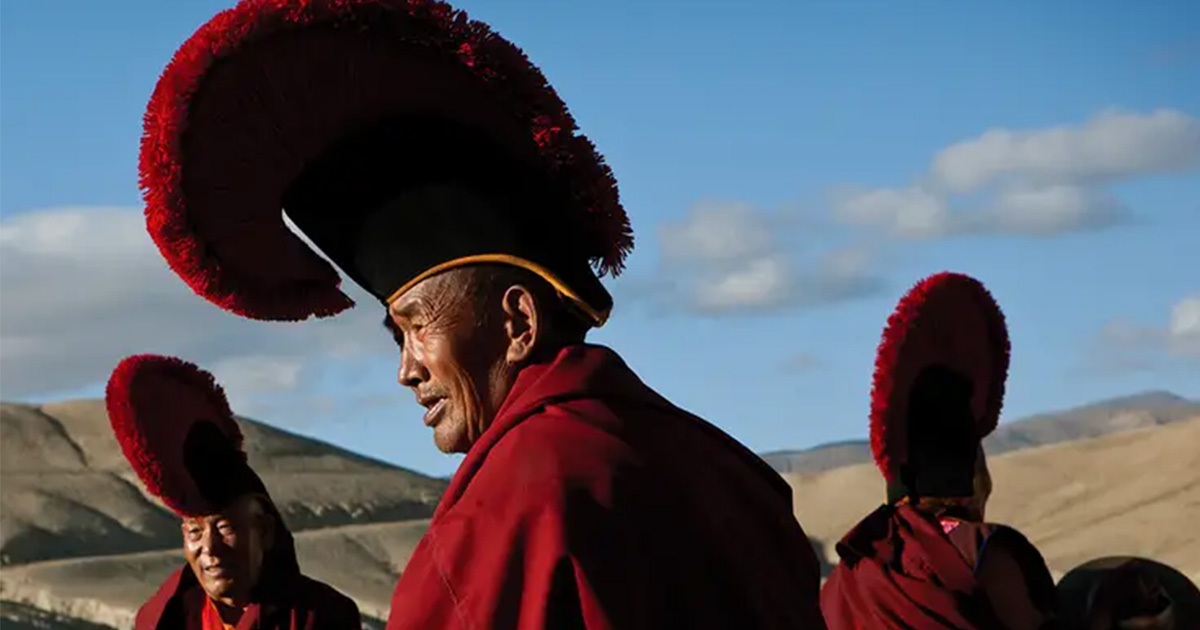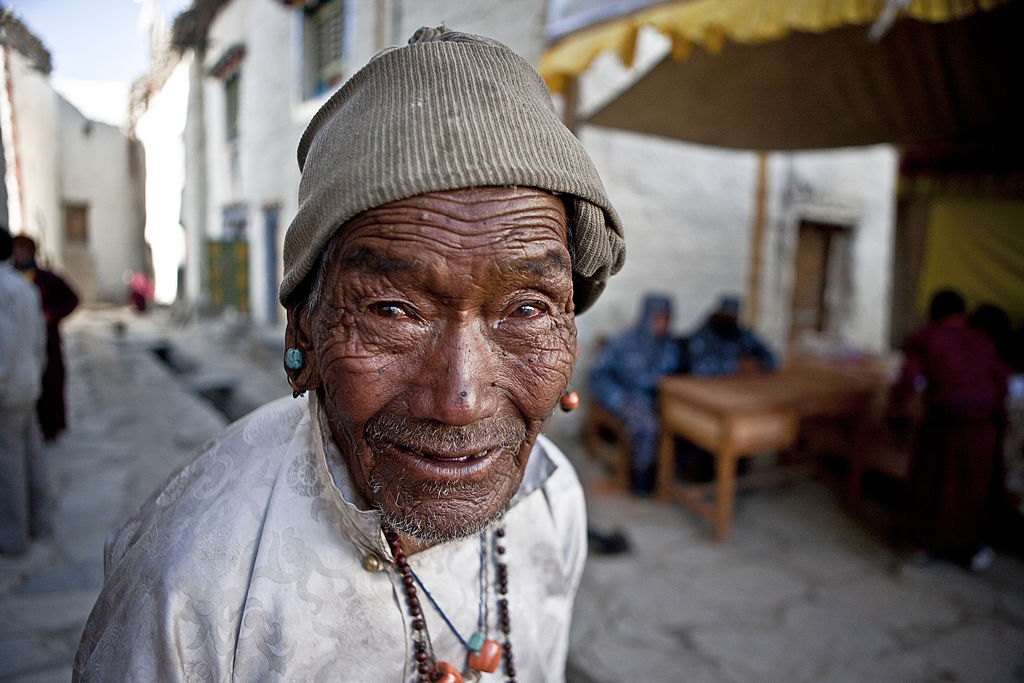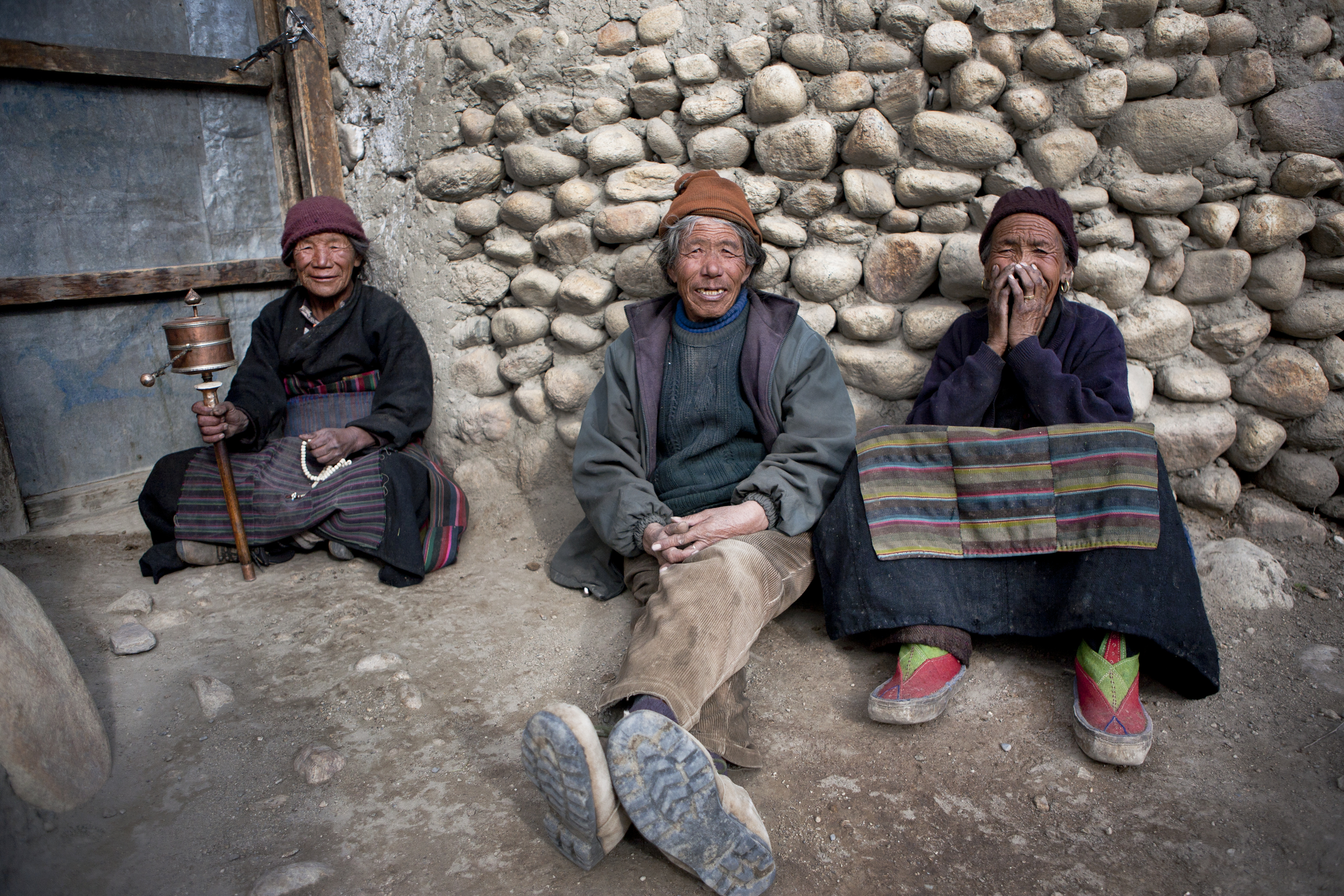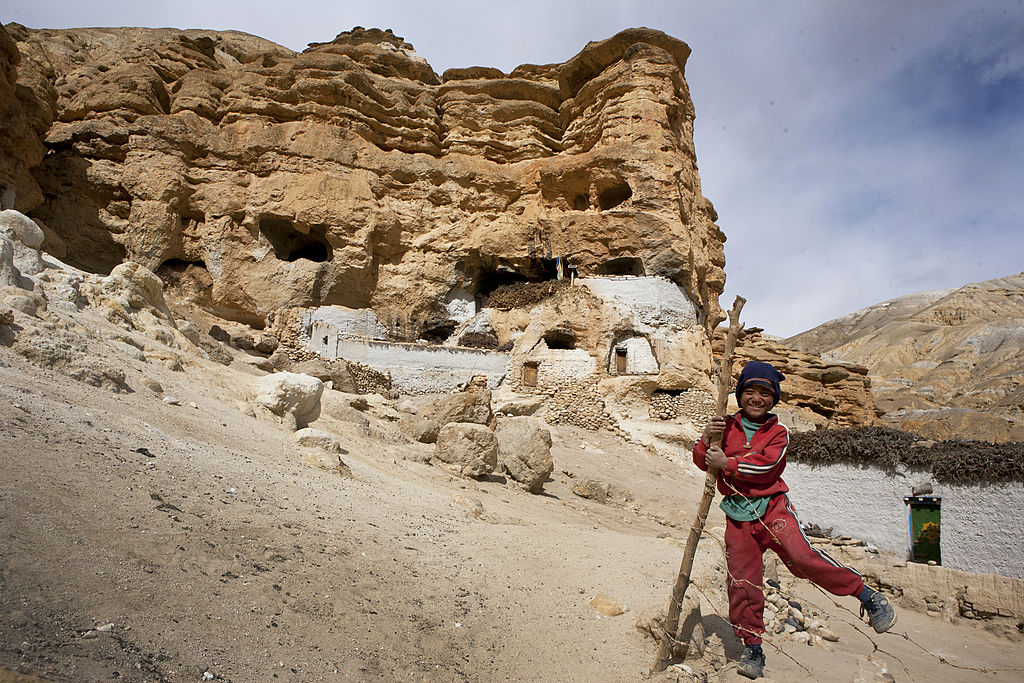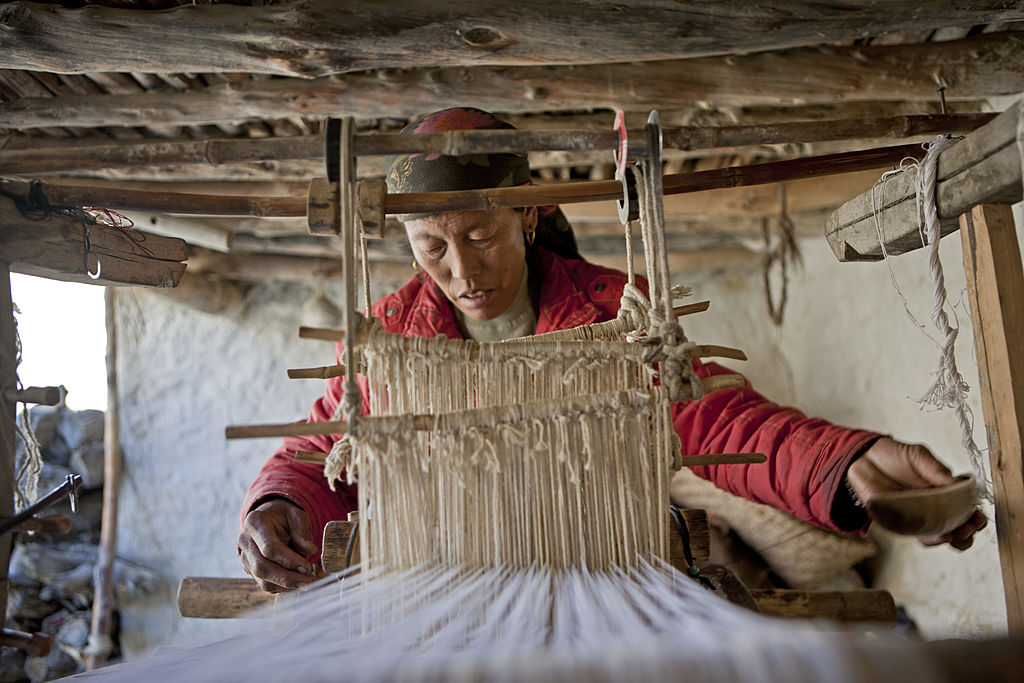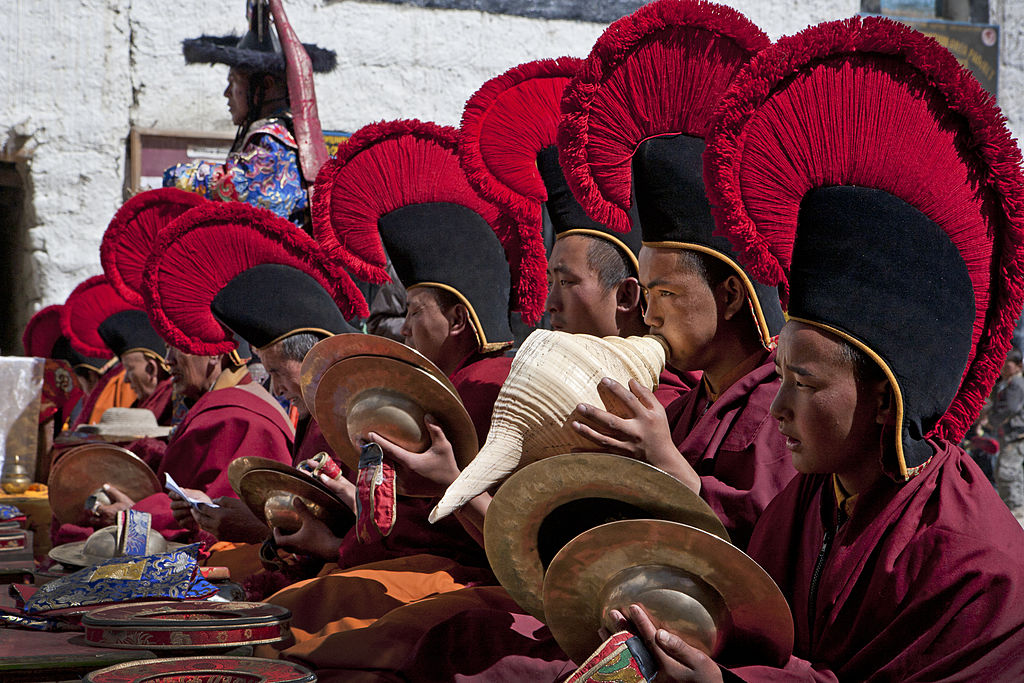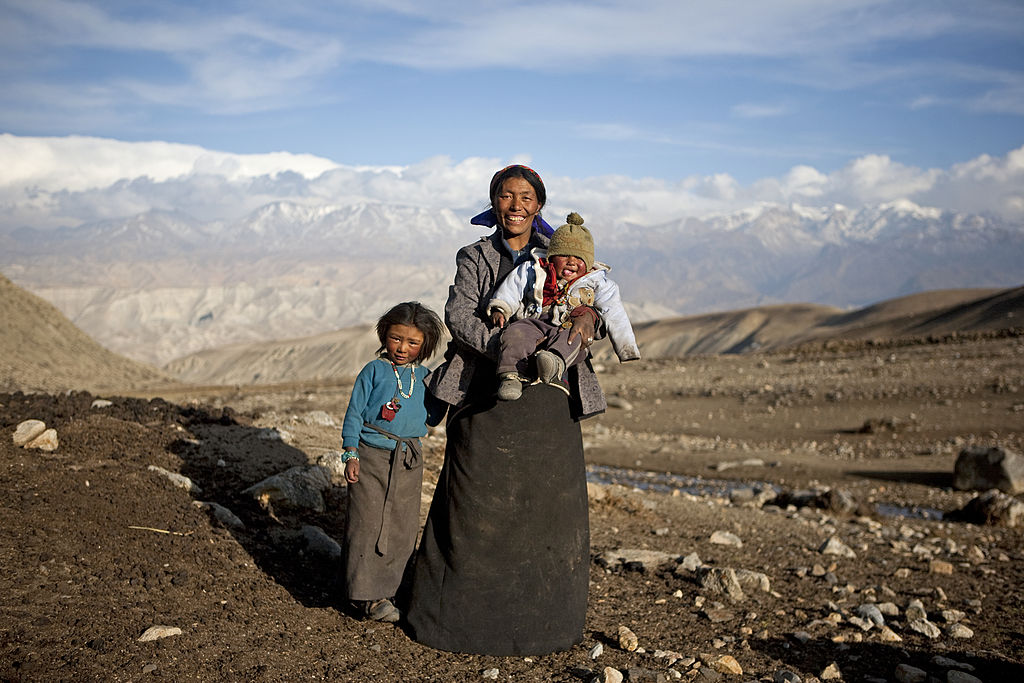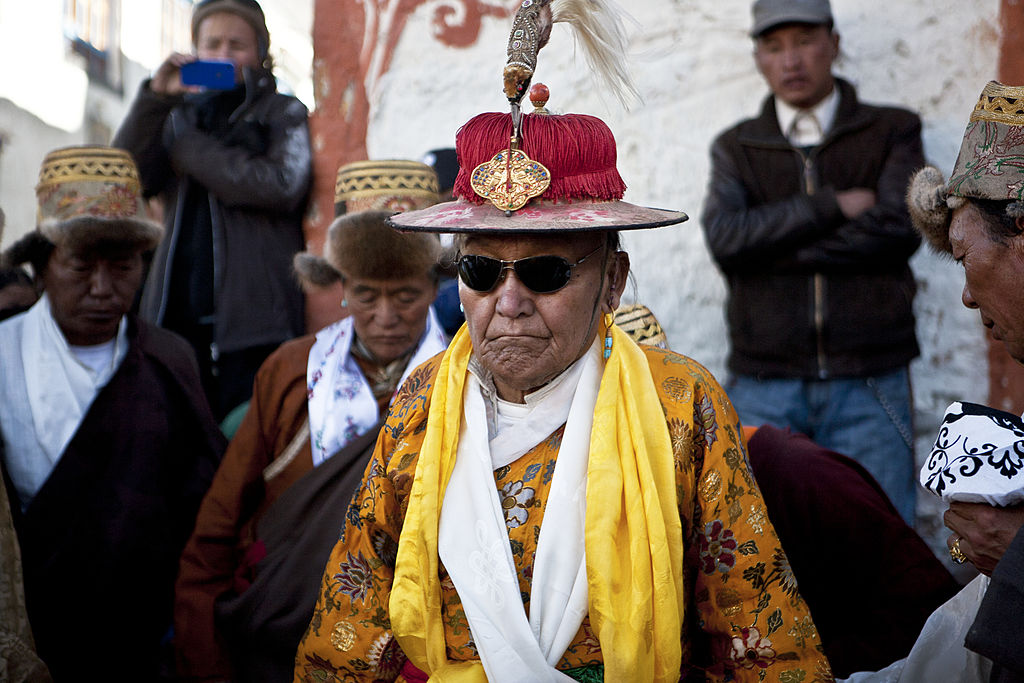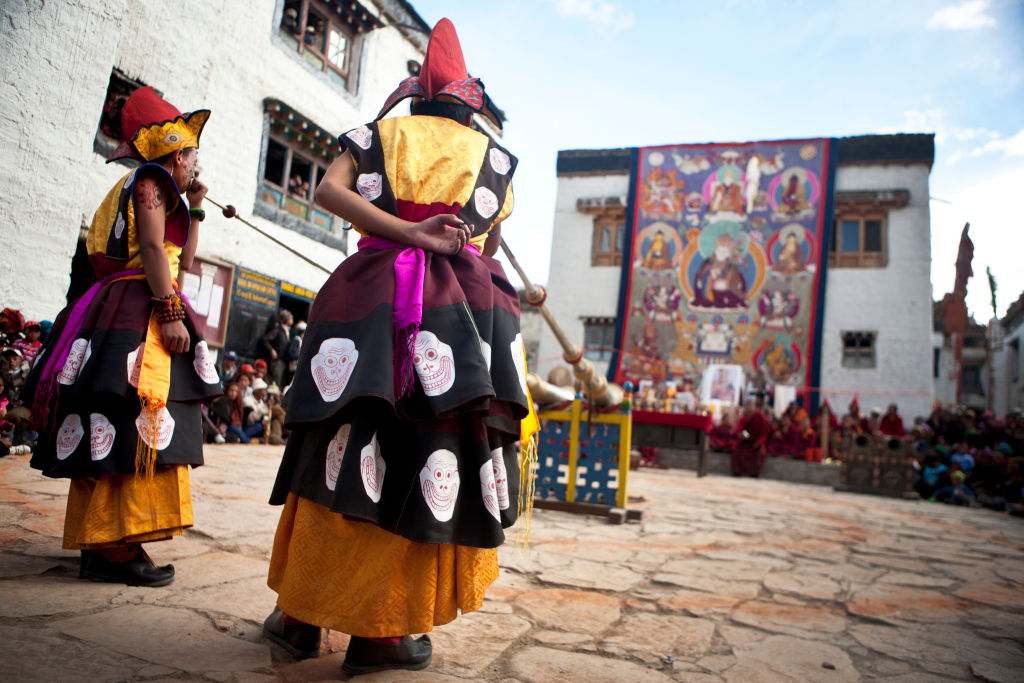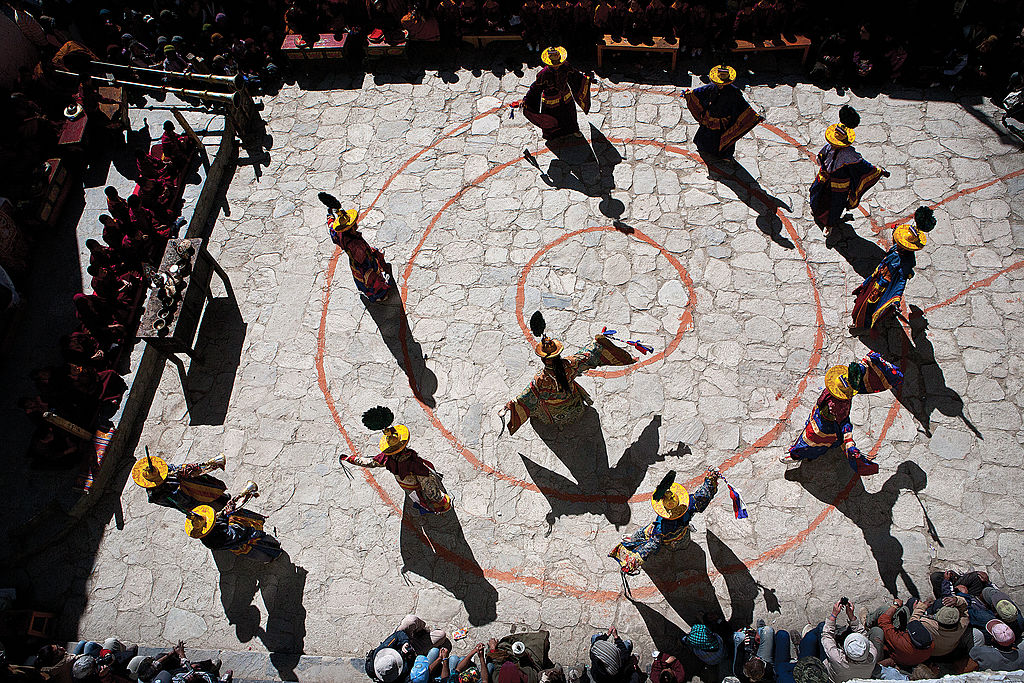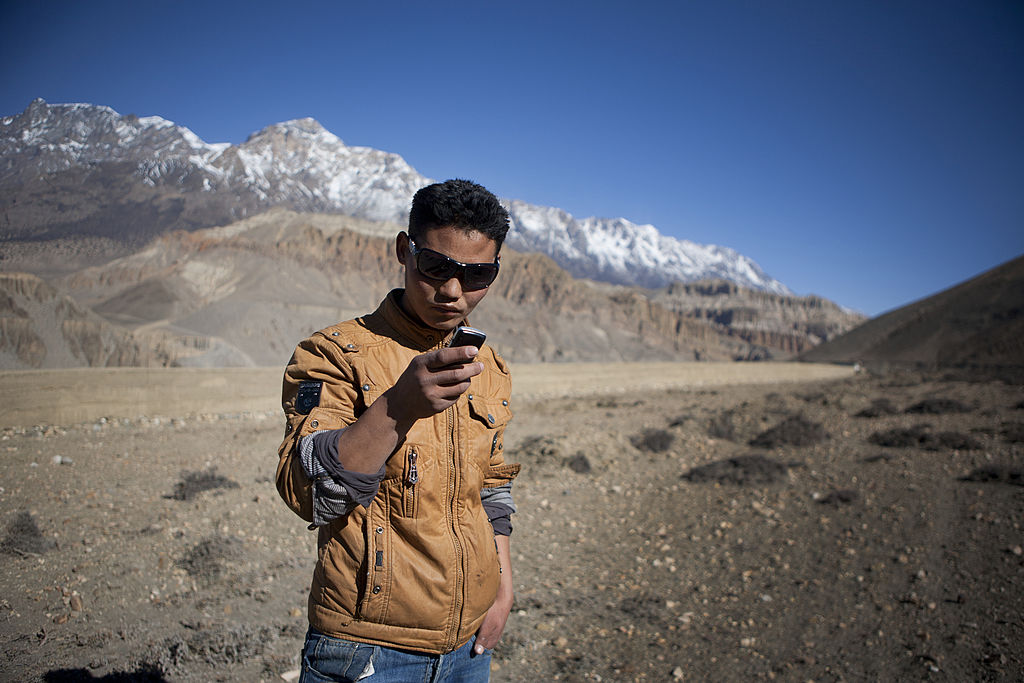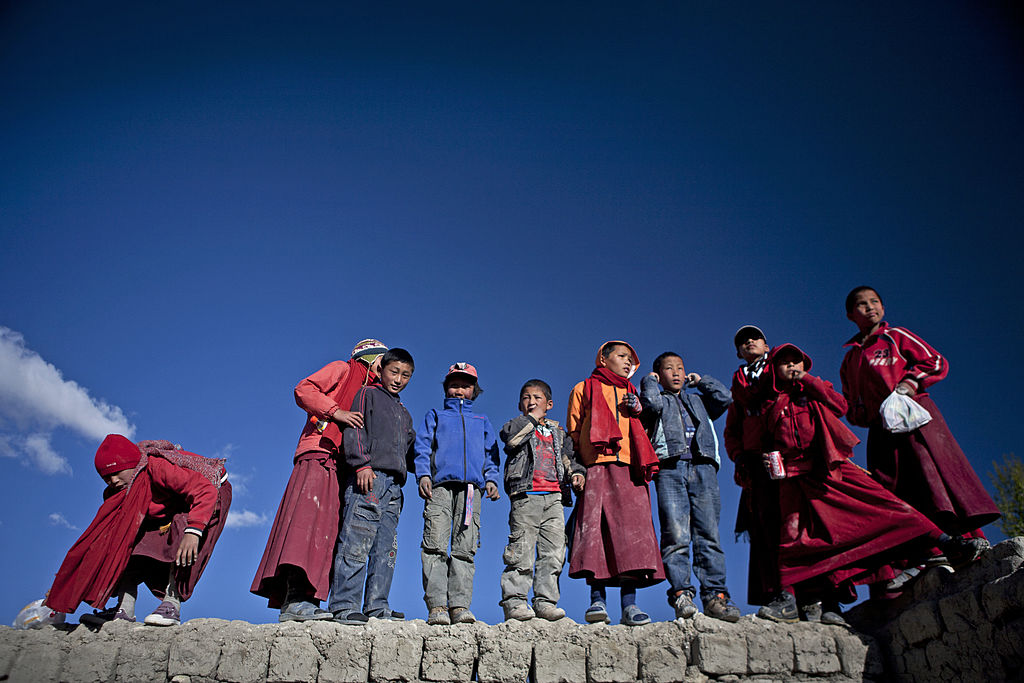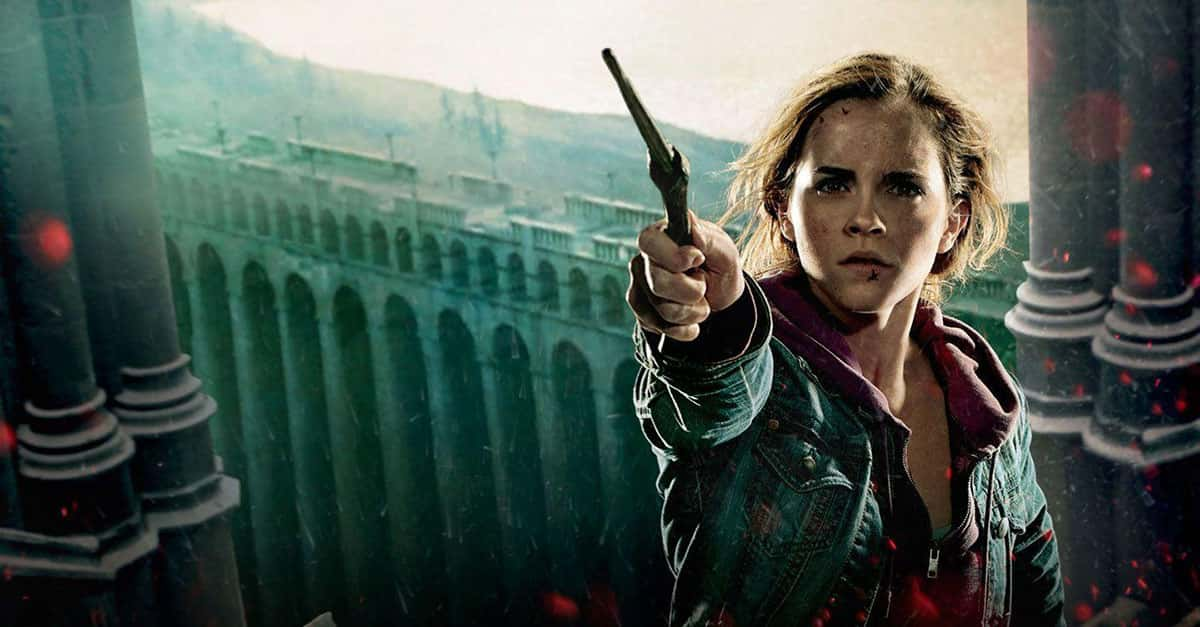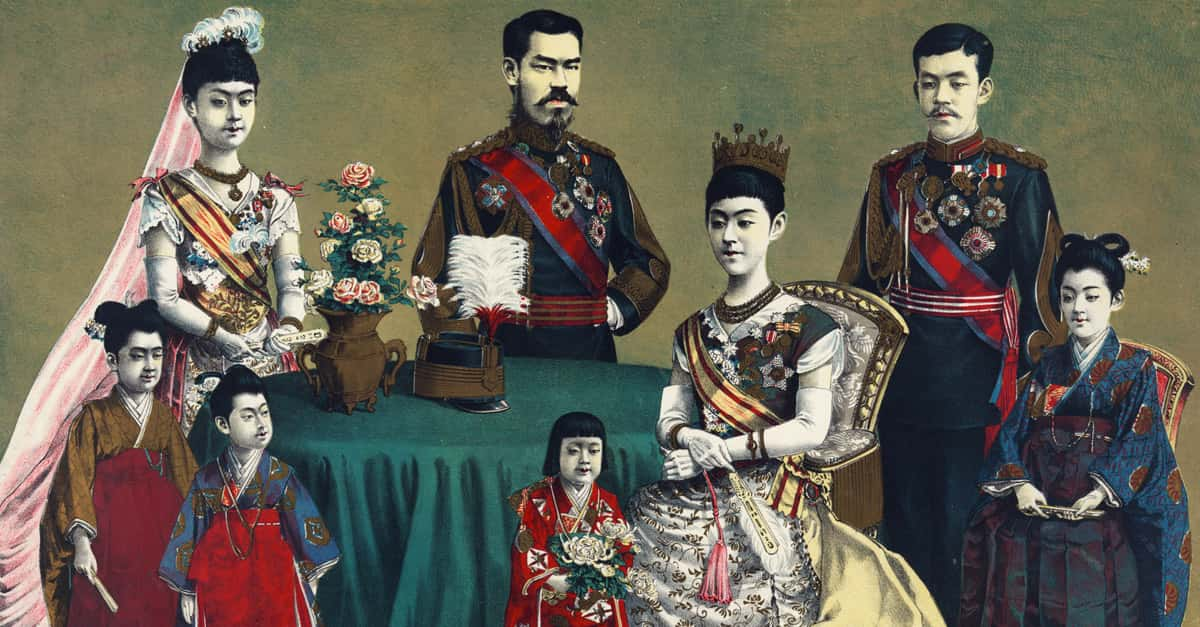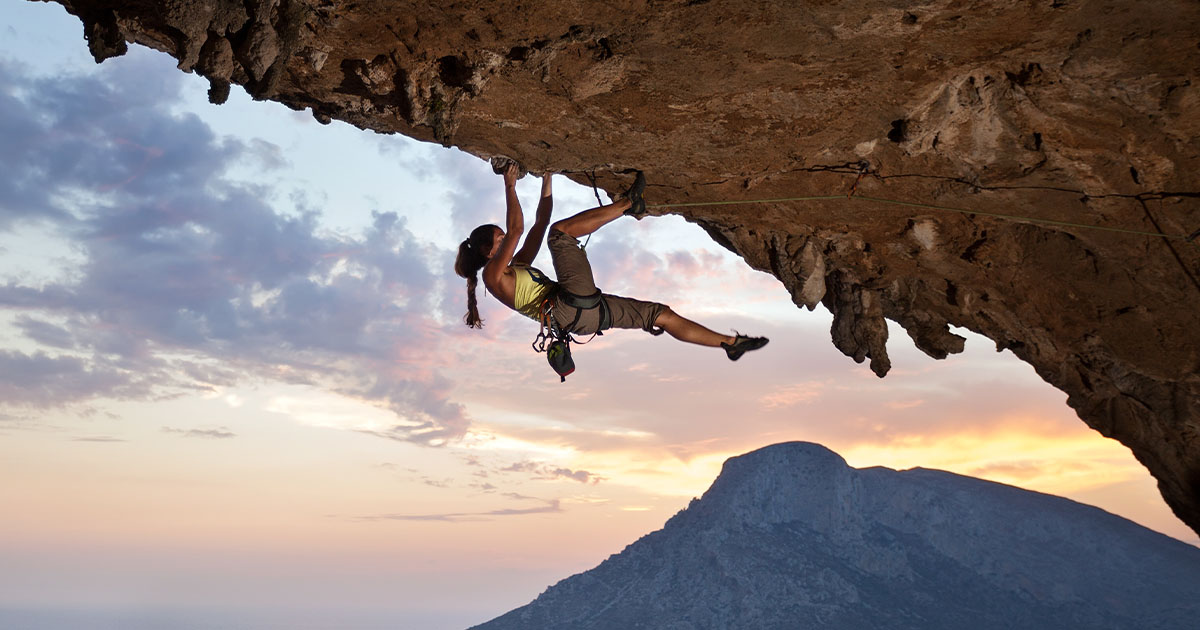A Unique Society
Most of the world has been explored and, thanks to the Internet and cell phones, most of it is connected. But there still exist, hidden away in remote locations, societies of people whose lives are very different from “modern” people. The Loba of Nepal are one such society.
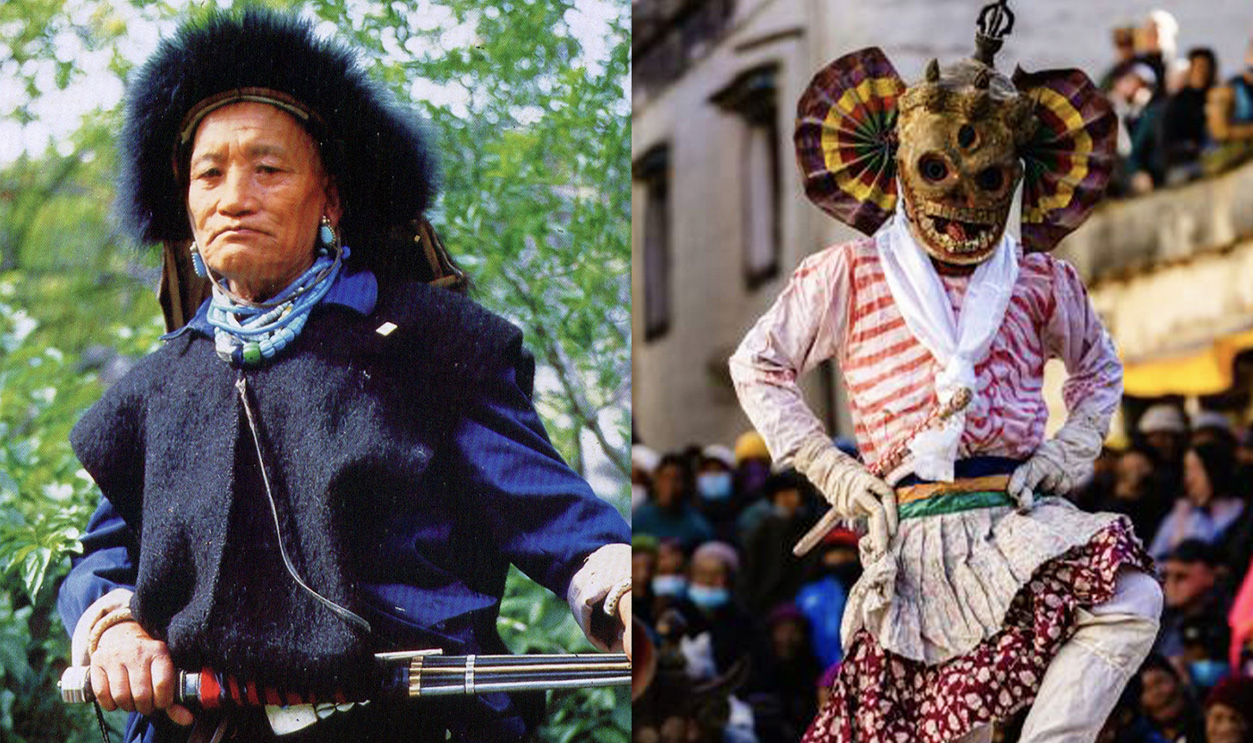
Nepal, Tibet, And China
The Loba live in an area of the world that is greatly contested. Nepal borders on the Tibetan Autonomous Region, more often simply called Tibet. Tibet, however, is considered to be a part of China, though there are many both within and outside of the country who believe Tibet should be granted independence.
Mustang (Pronounced “Moo Stong”)
Mustang (pronounced “moo stong”) is located in Nepal and is considered a “semi-autonomous” region, meaning it mostly governs itself rather than being governed by the larger Nepalese government. Mustang is located between Tibet and the Annapurna range of the Himalayas.
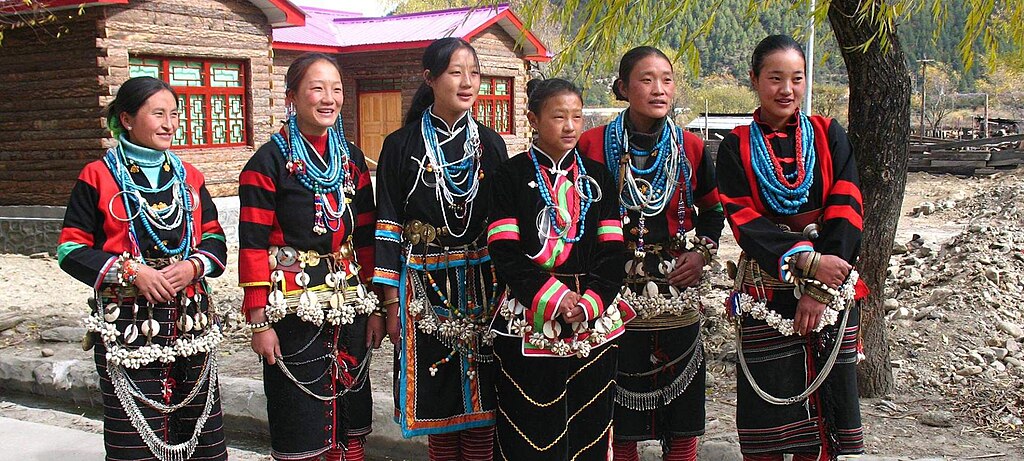 Warriormann, CC BY-SA 4.0, Wikimedia Commons
Warriormann, CC BY-SA 4.0, Wikimedia Commons
Incredible Landscape
Deep in the Himalayas, Mustang is a barren place. It lies in the canyon formed by the Kali Gandaki River. Villages lie along this canyon and the river. Some mountain streams feed small green valleys in the area.
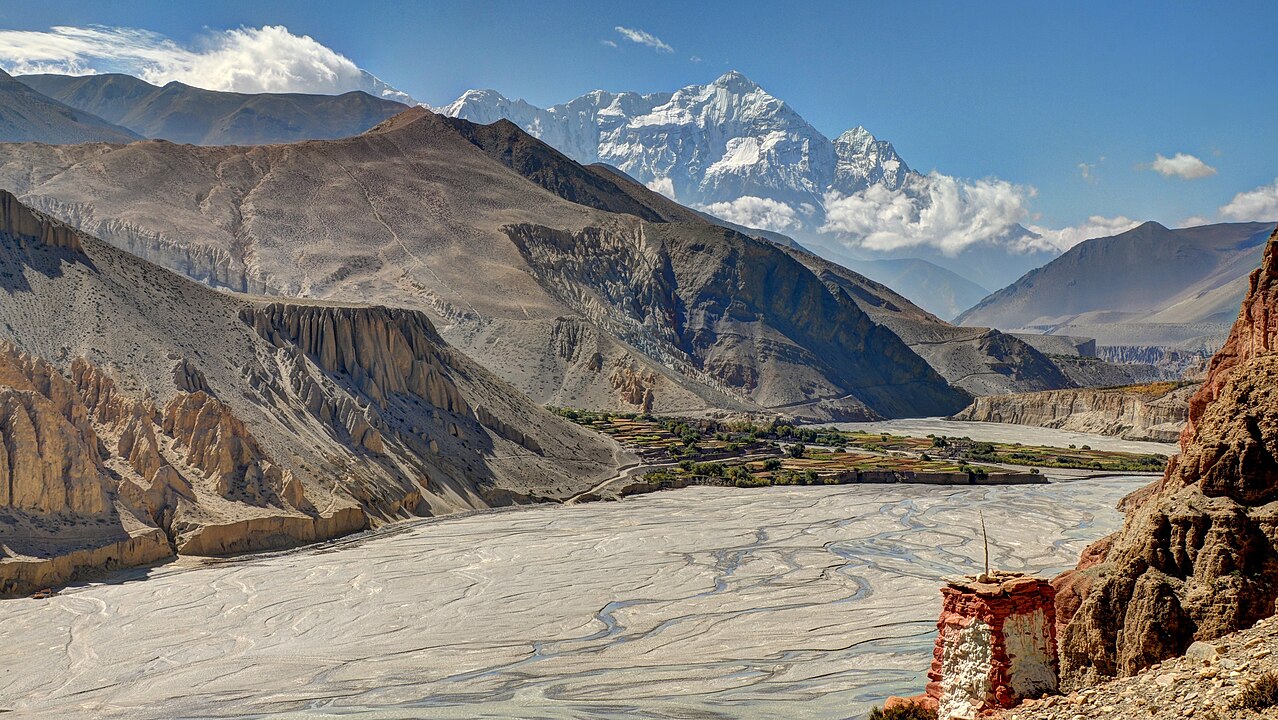 Carsten.nebel, CC BY-SA 4.0, Wikimedia Commons
Carsten.nebel, CC BY-SA 4.0, Wikimedia Commons
A Kingdom High Above The World
The Himalayas are known to be home to the highest mountain on Earth, Mount Everest. Mustang sits quite high up itself, the majority of the area being about 4,500 feet above sea level.
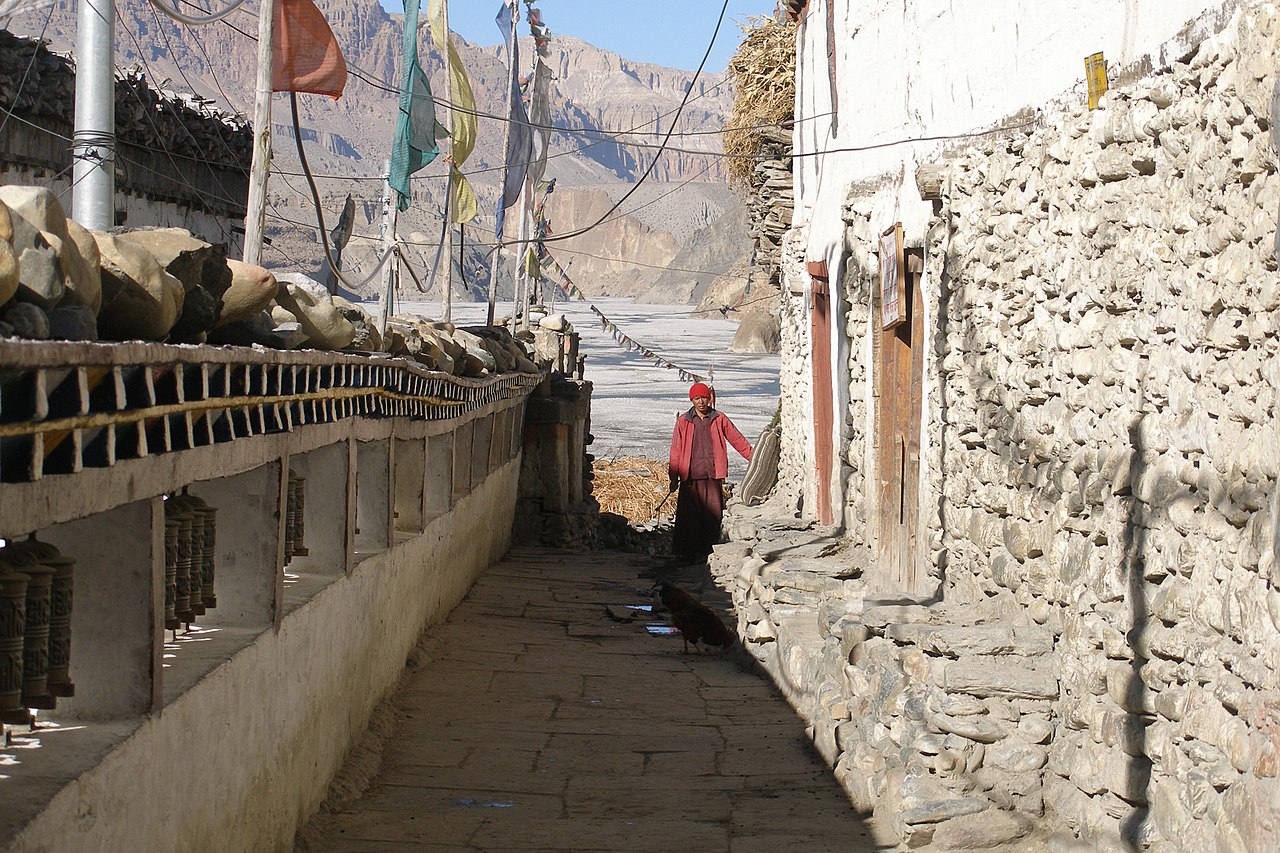 Vyacheslav Argenberg, CC BY 4.0, Wikimedia Commons
Vyacheslav Argenberg, CC BY 4.0, Wikimedia Commons
The Kingdom Of Lo
Before being annexed to the country of Nepal, the Mustang region was known as the Kingdom of Lo. Formerly an independent Buddhist kingdom, the name “Mustang” is a mispronunciation of the capital city Manthang.
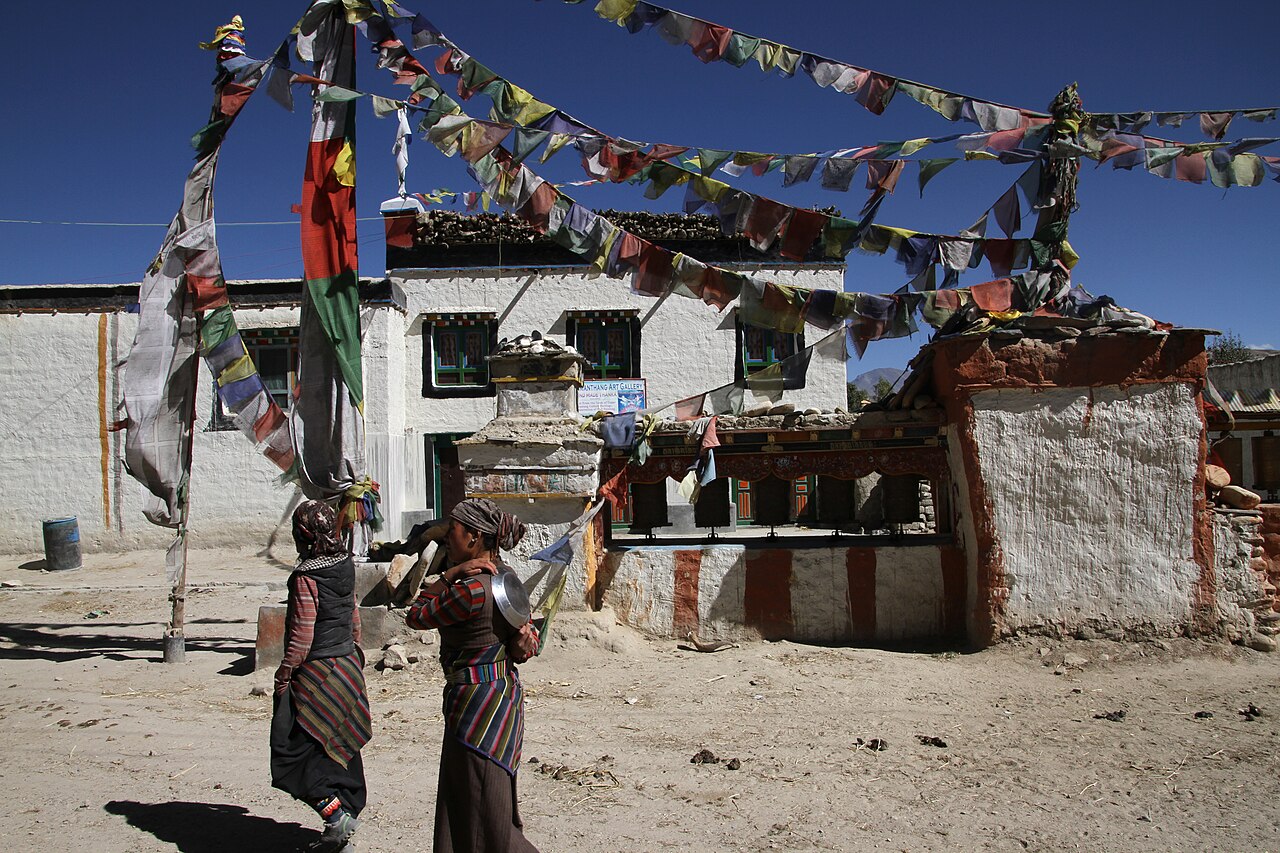 Gerd Eichmann, CC BY-SA 4.0, Wikimedia Commons
Gerd Eichmann, CC BY-SA 4.0, Wikimedia Commons
Loba, Lowa, Or Lo Pa?
The Indigenous people who inhabit the Mustang region are variously known as the Loba, the Lowa, or the Lo Pa. Like many in neighboring Tibet, they are practitioners of Tibetan Buddhism, and share many similarities with the Tibetan people.
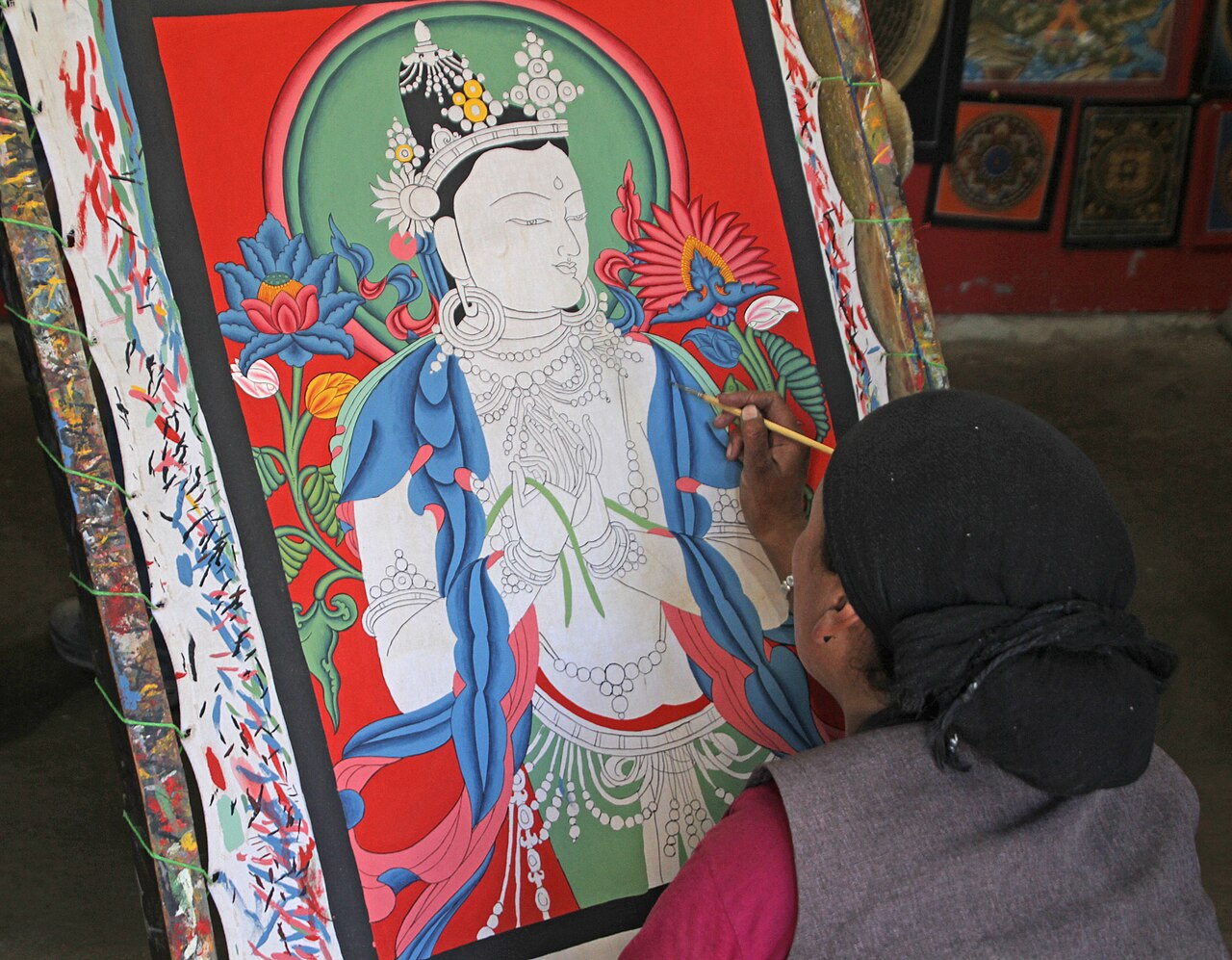 Gerd Eichmann, CC BY-SA 4.0, Wikimedia Commons
Gerd Eichmann, CC BY-SA 4.0, Wikimedia Commons
The History Of Mustang
Although historical records show the Kingdom of Lo to have been a prosperous place a few hundred years ago, people have lived in the area for much longer. It’s possible that the Loba, or their ancestors, have lived in the area for thousands of years.
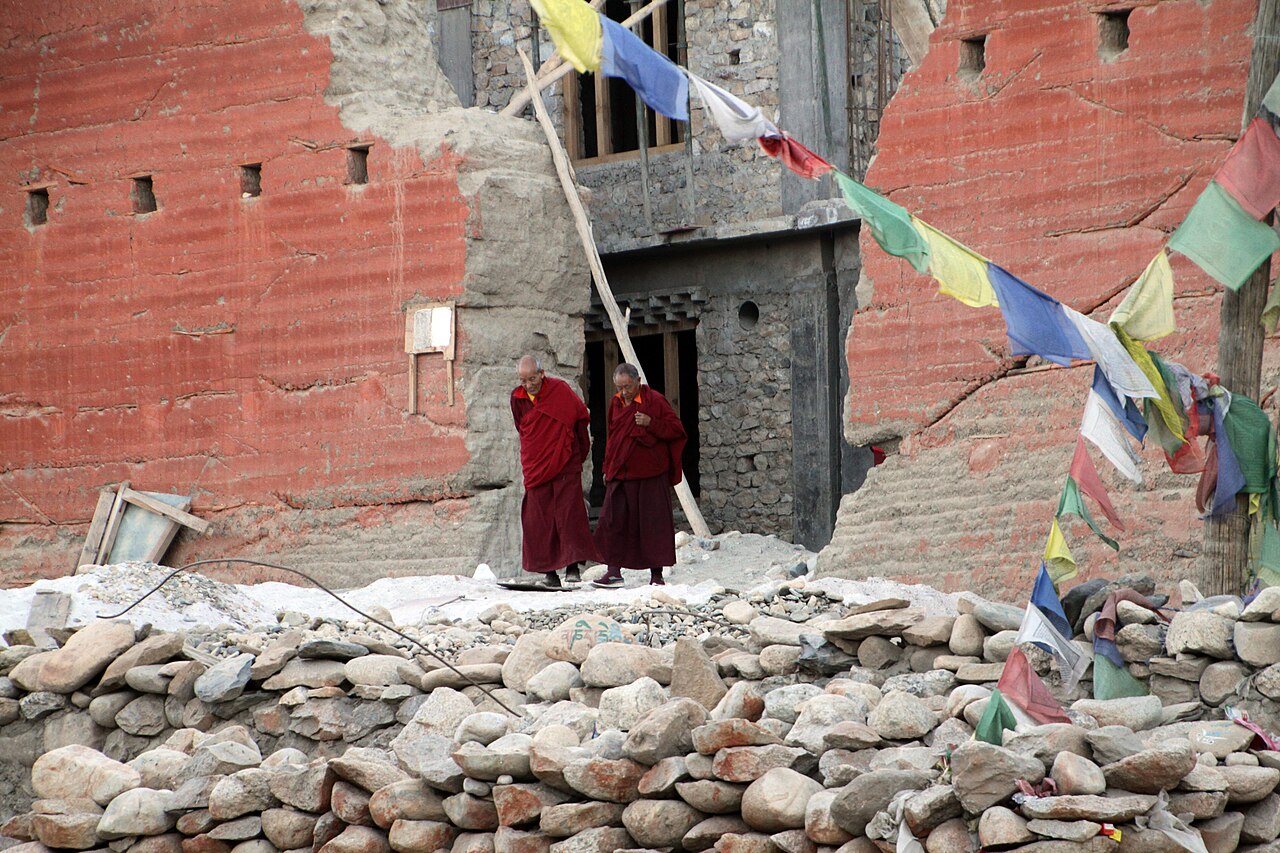 Gerd Eichmann, CC BY-SA 4.0, Wikimedia Commons
Gerd Eichmann, CC BY-SA 4.0, Wikimedia Commons
Ancient History
The Loba have a unique way of life that has endured for a long, long time. Along the Kali Gandaki River, thousands of hand-dug caves have been discovered high up on the cliff face. These caves reveal a great deal about the ancient peoples of the Mustang region, ancestors of the Loba.
Mysterious Caves
The caves in Mustang are very odd. Archaeologists aren’t sure how the ancient peoples carved them, or even how they climbed up the cliff face to enter them. Some caves are isolated and others are in groups. It is estimated that there are about 10,000 caves in total.
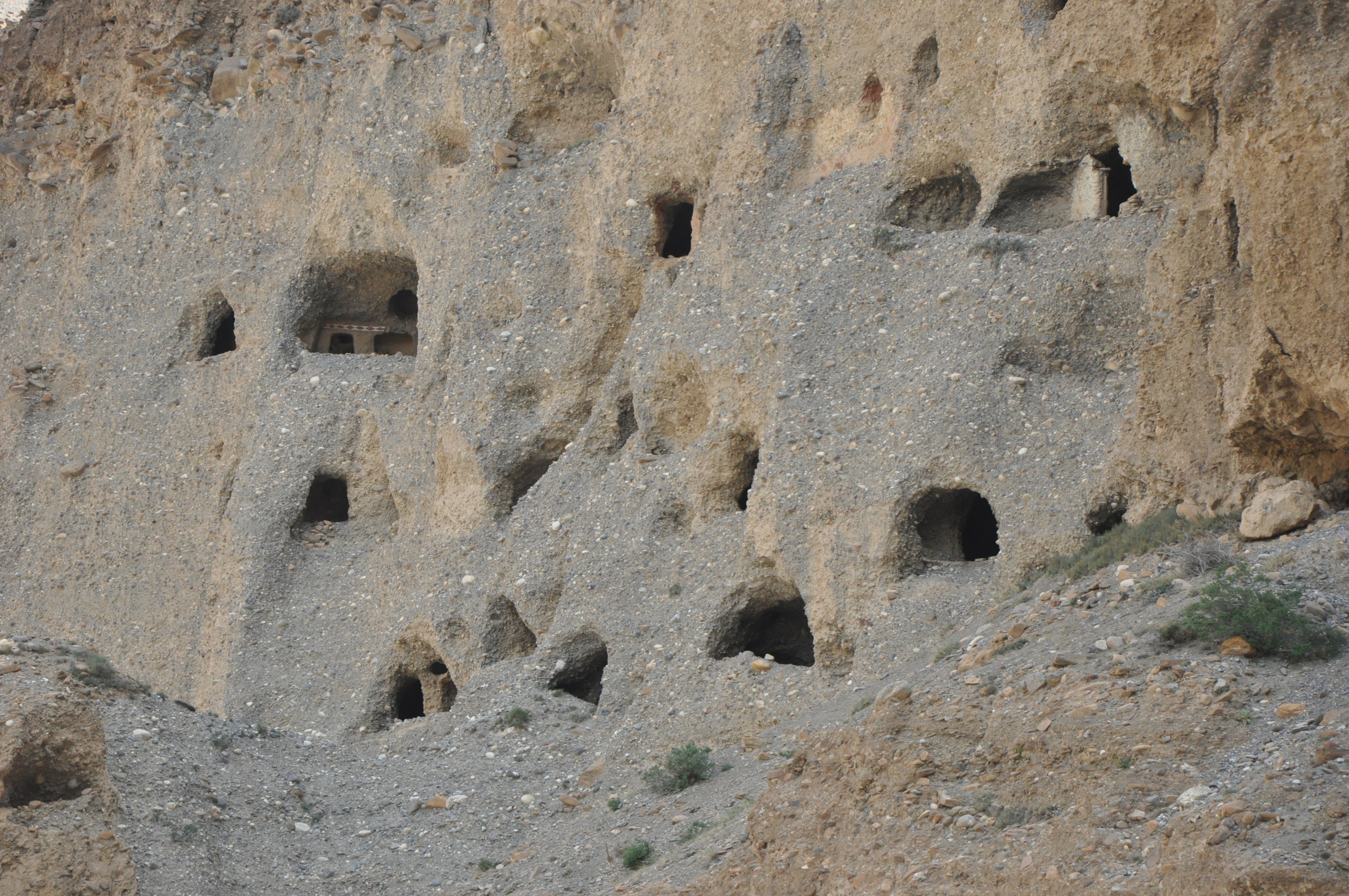 Min Kumar Sharma, CC BY-SA 4.0, Wikimedia Commons
Min Kumar Sharma, CC BY-SA 4.0, Wikimedia Commons
Hidden Treasures
Once archaeologists were able to gain access to the caves, they were greeted with incredible sights. One cave contained a 26-foot-long mural on its wall depicting famous figures from Buddhist history. Another was home to 8,000 scrolls, most over 600 years old.
Burial Sites
Other caves seem to have been used for funeral rites. Bodies discovered in the caves seem to be an incredible 2,000 years old. They were all laid out on wooden beds and decorated with jewels and beads.
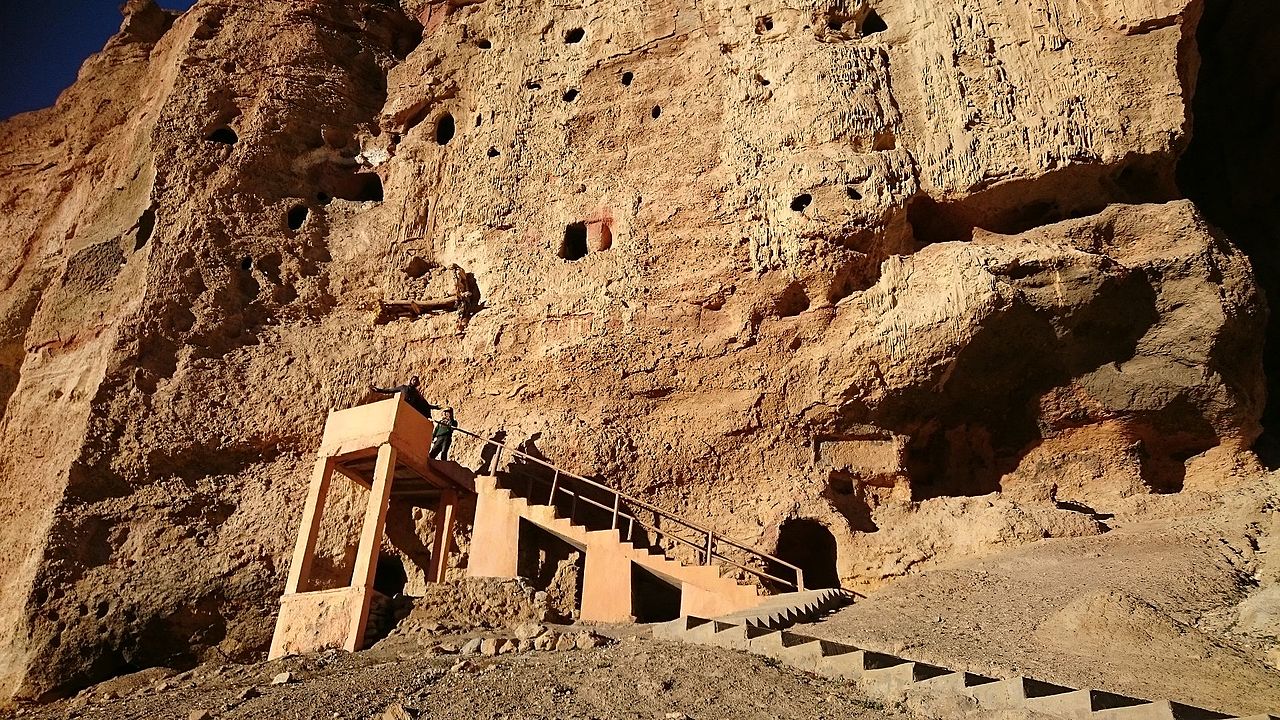 Usha Pande, CC BY-SA 4.0, Wikimedia Commons
Usha Pande, CC BY-SA 4.0, Wikimedia Commons
A Prosperous Kingdom
During the 16th and 17th centuries, the “forbidden” Kingdom of Lo was known to be a very prosperous place. At the time, it was a stop along major trade routes. Caravans from India would often stop here on their way to Tibet.
Under Nepalese Rule
In the 18th century, neighboring Nepal, a primarily Hindu state, conquered the Kingdom of Lo. Trade and caravan routes shifted in the area during this time, and the fortunes of Mustang declined and the kingdom became isolated.
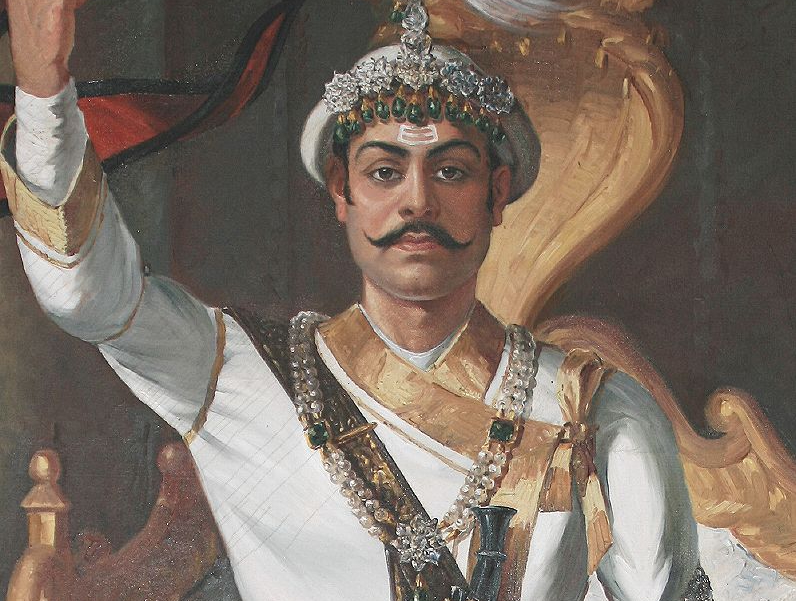 Unknown Author, Wikimedia Commons
Unknown Author, Wikimedia Commons
First Contact
For over a hundred years, few if any Westerners had any contact with the inhabitants of the Mustang region. During the 1950s and 1960s, while tensions between the US and China were high, the CIA trained Tibetan insurgents in the area.
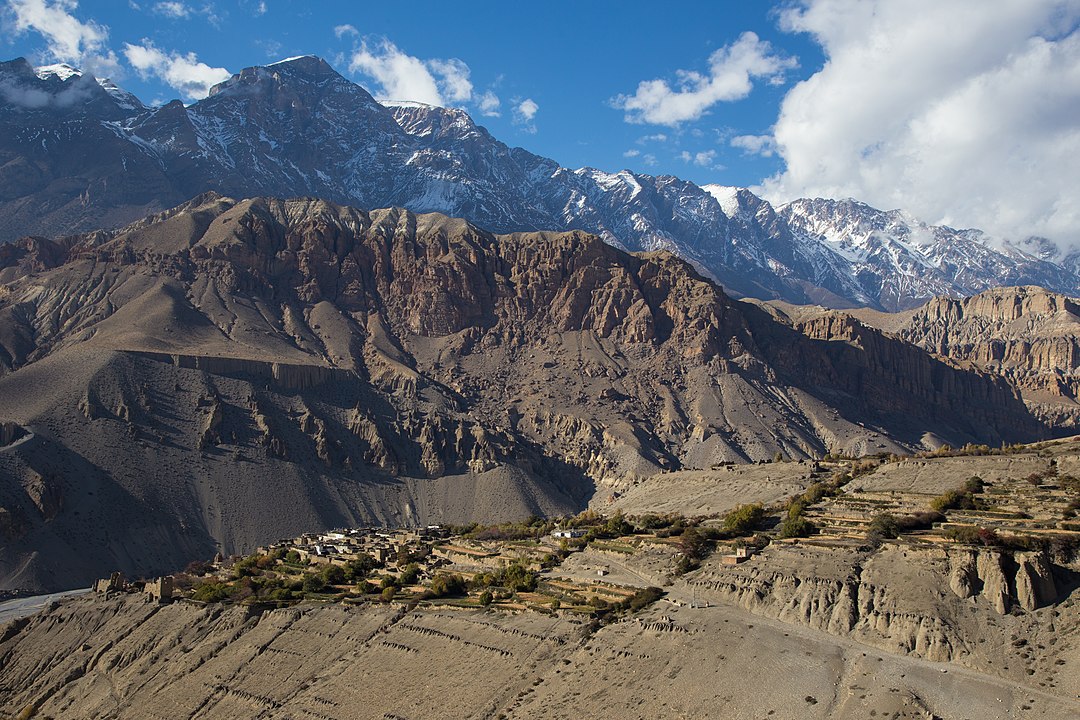 Jmhullot, CC BY 3.0, Wikimedia Commons
Jmhullot, CC BY 3.0, Wikimedia Commons
Training The Kham
The fight for Tibetan independence was supported by the United States. Fierce fighters from the Kham province were flown to the US to learn the use of automatic weapons, then returned to Mustang to prepare for raids into Tibet.
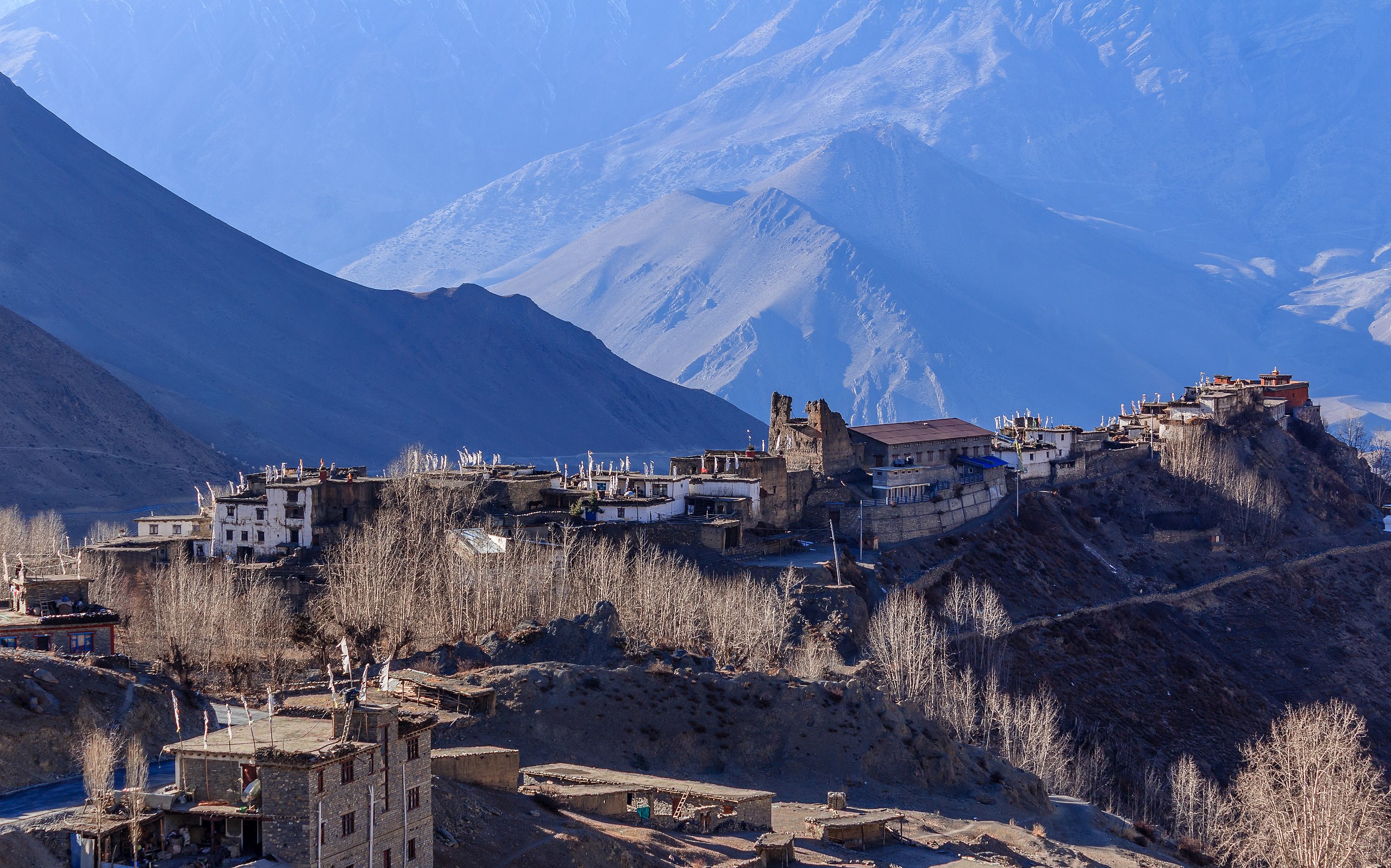 Bijay chaurasia, CC BY-SA 4.0, Wikimedia Commons
Bijay chaurasia, CC BY-SA 4.0, Wikimedia Commons
Closing Borders
International tensions and the growing call for Tibetan independence caused the Chinese government to close the Tibet-Nepal border in 1960. Due to its use as a staging ground for raids into Tibet, the Chinese government also encouraged the Nepalese government to completely isolate Mustang.
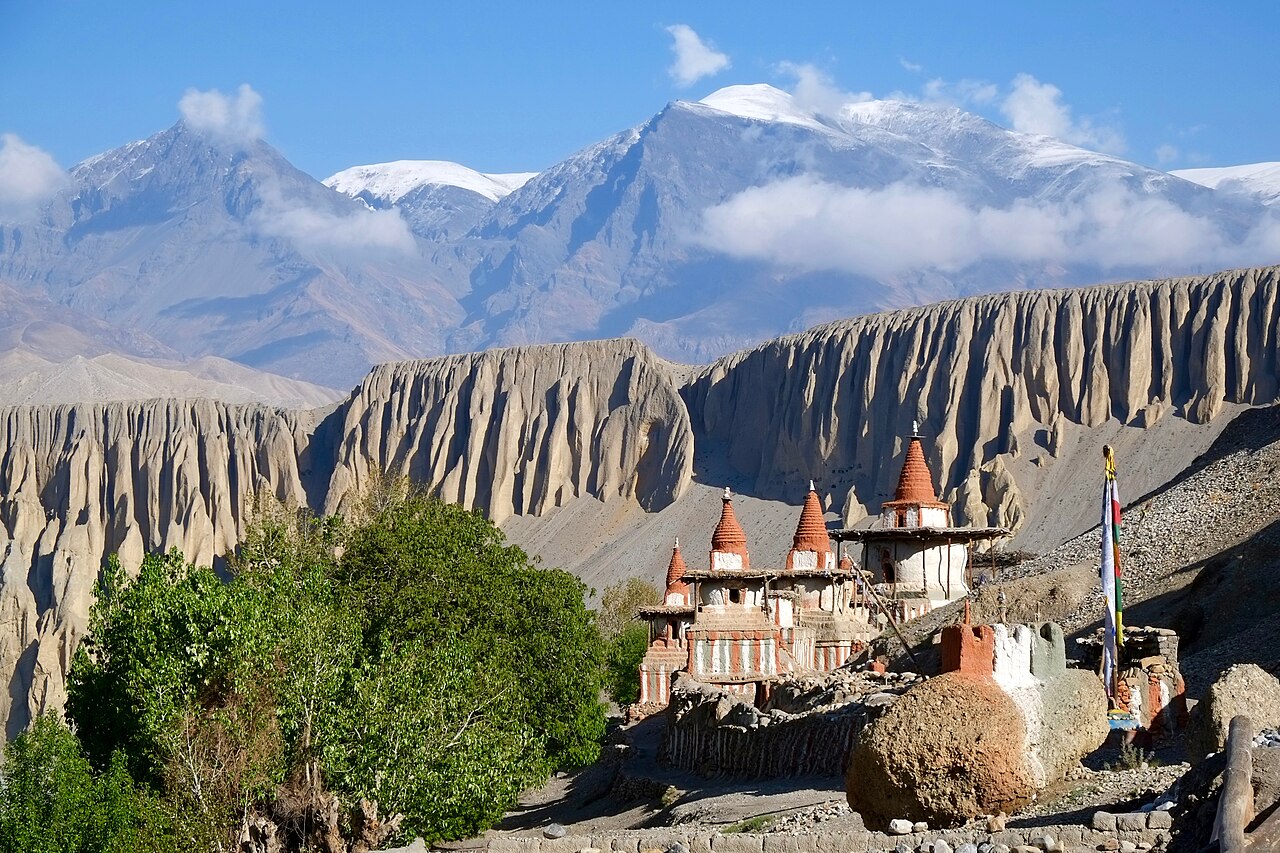 Patricia Sauer, CC BY-SA 4.0, Wikimedia Commons
Patricia Sauer, CC BY-SA 4.0, Wikimedia Commons
Isolated To This Day
It was only in 1991 that Mustang formally opened its borders and allowed foreign visitors, though some explorers had visited the remote kingdom previously. For a long time, there were no telephones, cars, or roads, though contact with the outside world had brought some of these modern conveniences to Mustang.
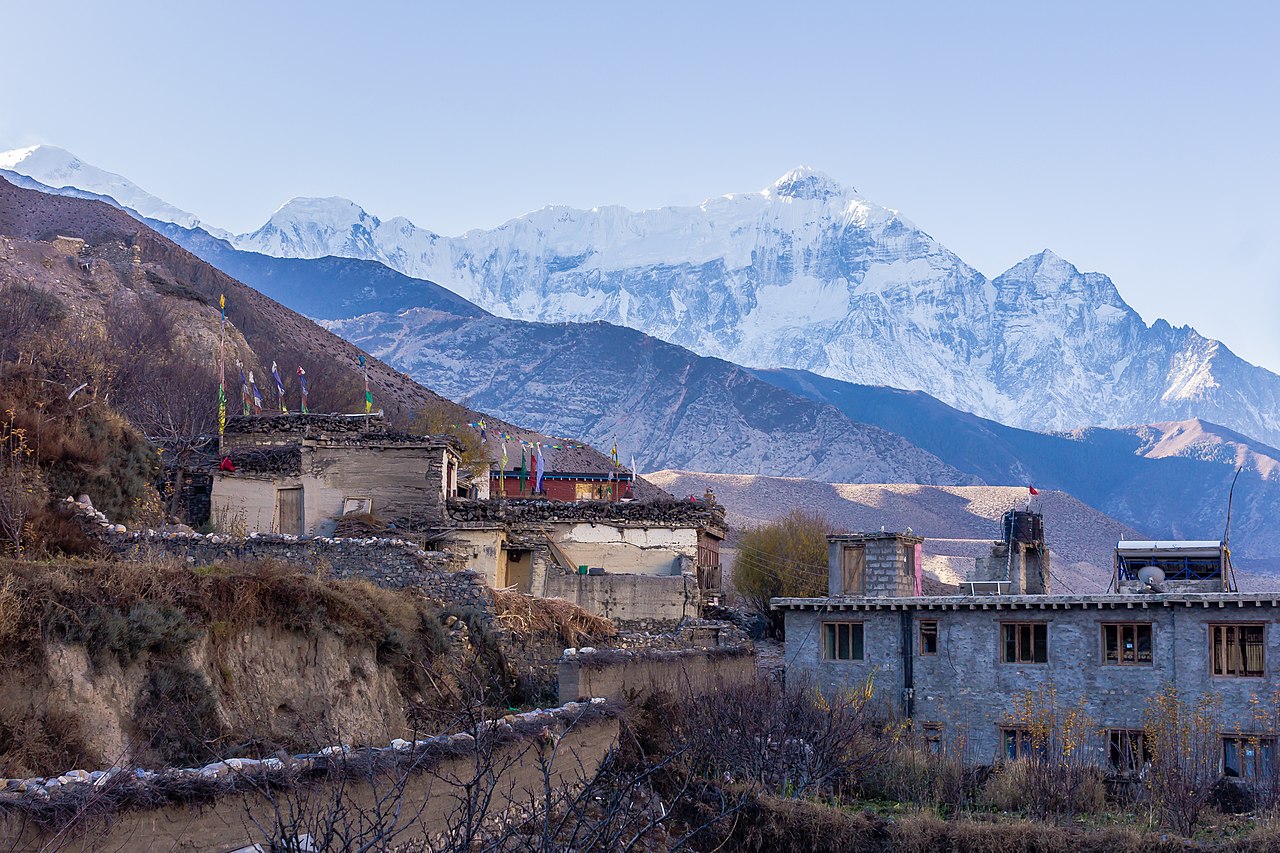 Bijay chaurasia, CC BY-SA 4.0, Wikimedia Commons
Bijay chaurasia, CC BY-SA 4.0, Wikimedia Commons
Architecture
The traditional villages of the Loba have changed little over the centuries. Houses are made of stone and mud. Each village has a Gompa, a monastery. Since the opening of the borders of the kingdom, some of these Gompas have offered tours to tourists in the area.
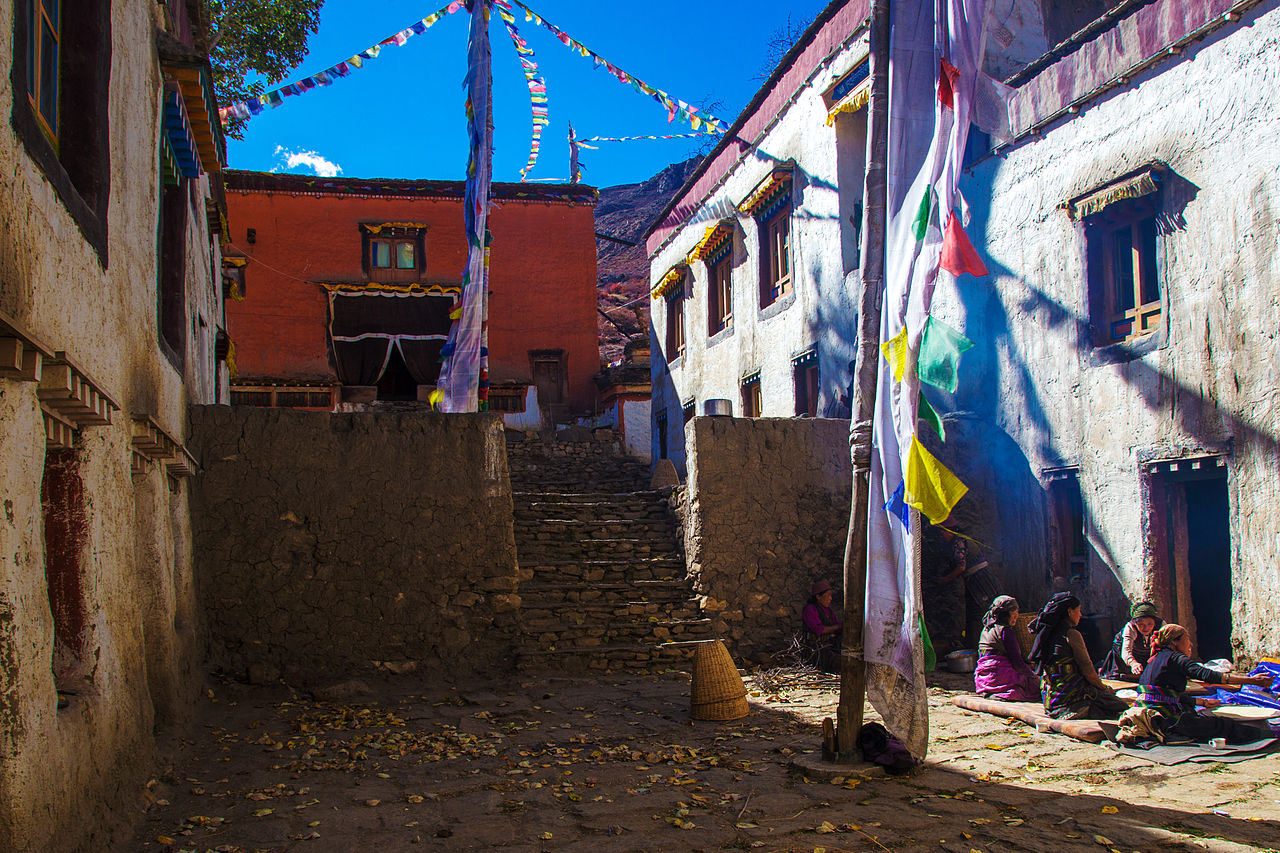 Jean-Marie Hullot, CC BY 2.0, Wikimedia Commons
Jean-Marie Hullot, CC BY 2.0, Wikimedia Commons
A Multi-Purpose Dwelling
The houses of the Loba are usually two-story affairs. The first level is a storeroom and also houses animals owned by the family. The second floor is a multi-function single room that serves as a kitchen, living area, and bedroom.
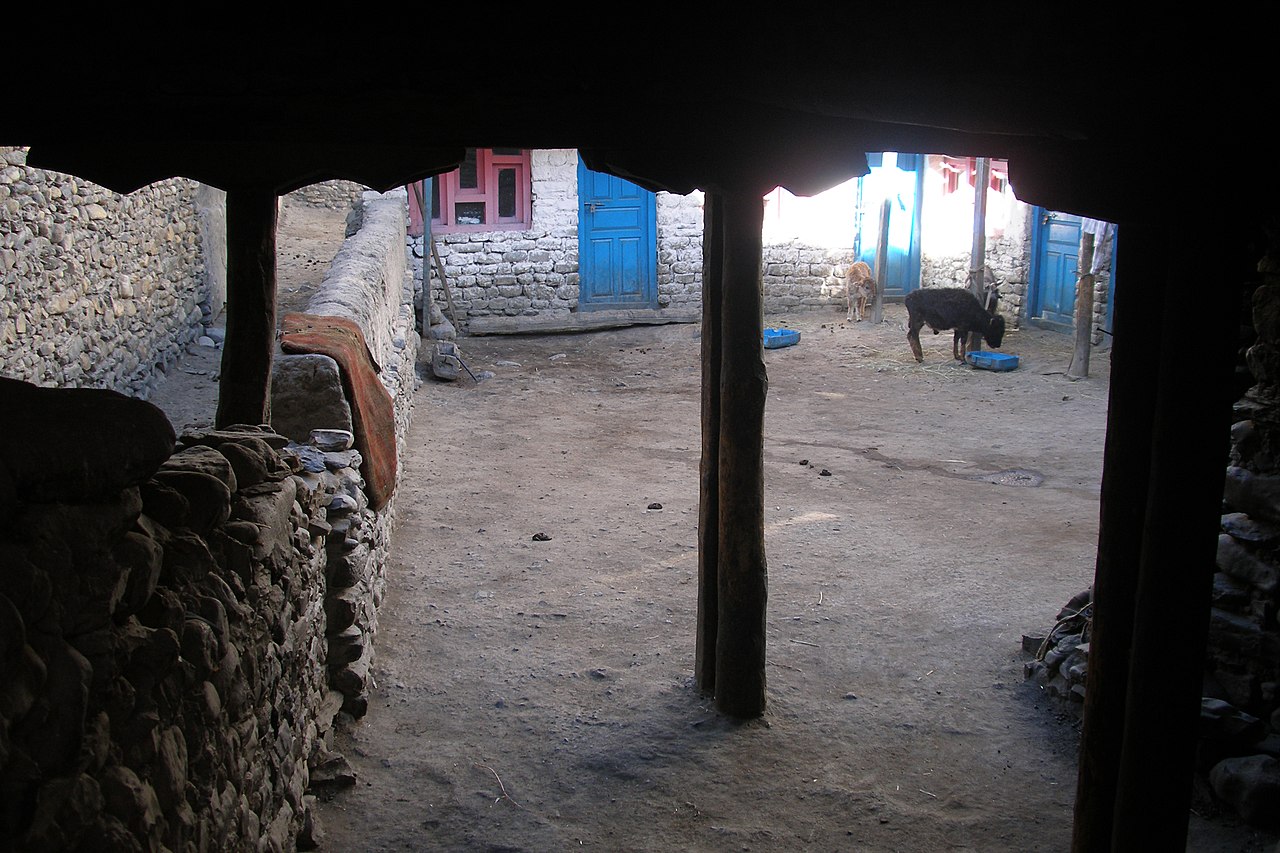 Vyacheslav Argenberg, CC BY 4.0, Wikimedia Commons
Vyacheslav Argenberg, CC BY 4.0, Wikimedia Commons
Mustangese Buddhism
The Loba are Tibetan Buddhists. They hold the Dalai Lama in the highest respect, and their Buddhist practice is thought to be among the most traditional and pure forms of the religion in the world.
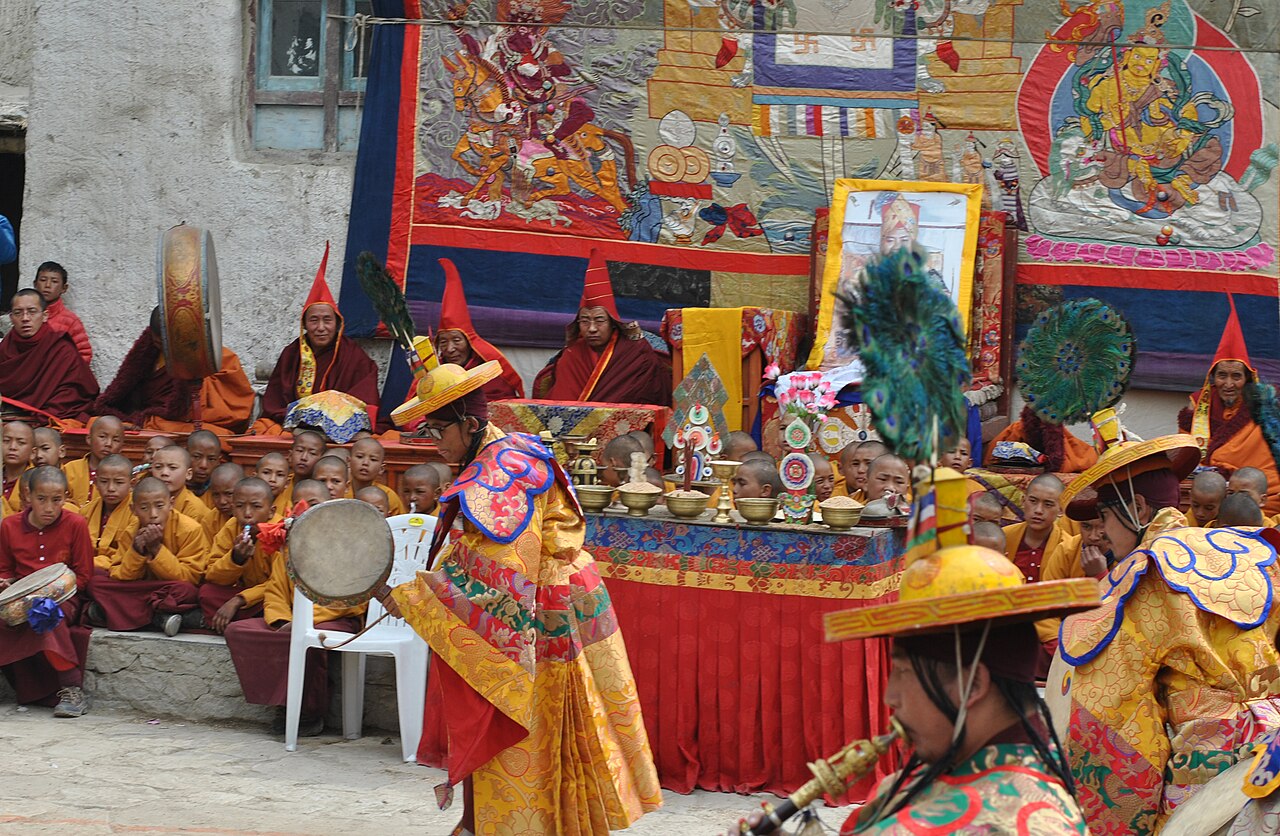 Sumitssot, CC BY-SA 4.0 , Wikimedia Commons
Sumitssot, CC BY-SA 4.0 , Wikimedia Commons
Buddhist Architecture
Temples in Loba villages are influenced by Tibetan Buddhism. Orange and white temples are found throughout the region. These temples are decorated with prayer flags and carvings–some carvings are ancient, preserved since the 15th century by the monks.
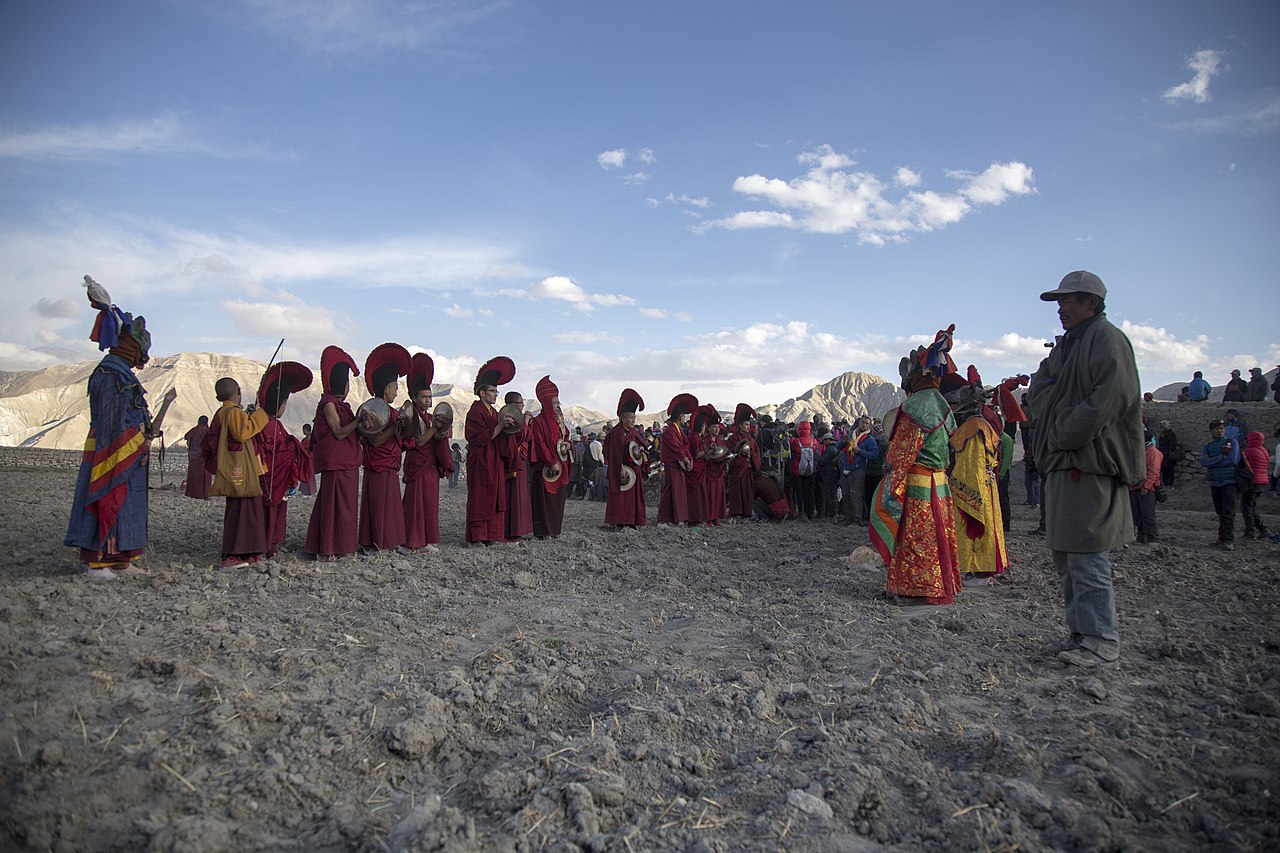 Anurag977, CC BY-SA 4.0, Wikimedia Commons
Anurag977, CC BY-SA 4.0, Wikimedia Commons
The Lo Manthang Monastery
The holiest place in all of Mustang is the single active monastery, located in the capital city of Lo Manthang. Due to the influence of China over Tibet, the practices of Mustang Buddhists and the monks in the monastery are considered “less disturbed” than the practices of their Tibetan neighbors.
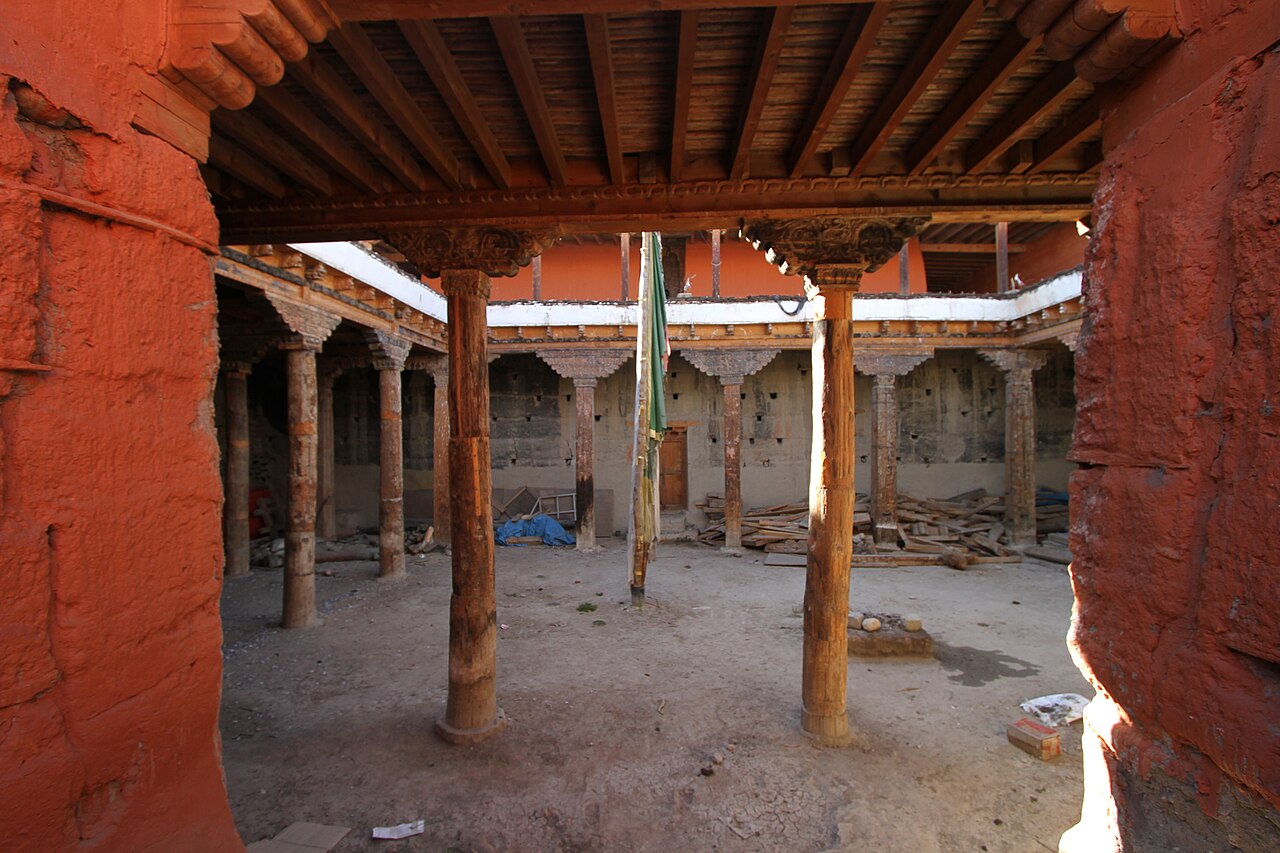 Gerd Eichmann, CC BY-SA 4.0, Wikimedia Commons
Gerd Eichmann, CC BY-SA 4.0, Wikimedia Commons
Musical Monks
The monks of the Mustang play long trumpets, decorated with silver and gold. The sound of these trumpets resembles the mooing of a cow. Like a telescope, the trumpets fold up for easy transport. Monks travel to India or Kathmandu to learn how to play these unique instruments.
Macabre Musical Instruments
Along with their amazing folding trumpets, the monks of Mustang use other traditional instruments that are somewhat creepy. Some play flutes that are carved from human thigh bones, and others use drums made from human skulls!
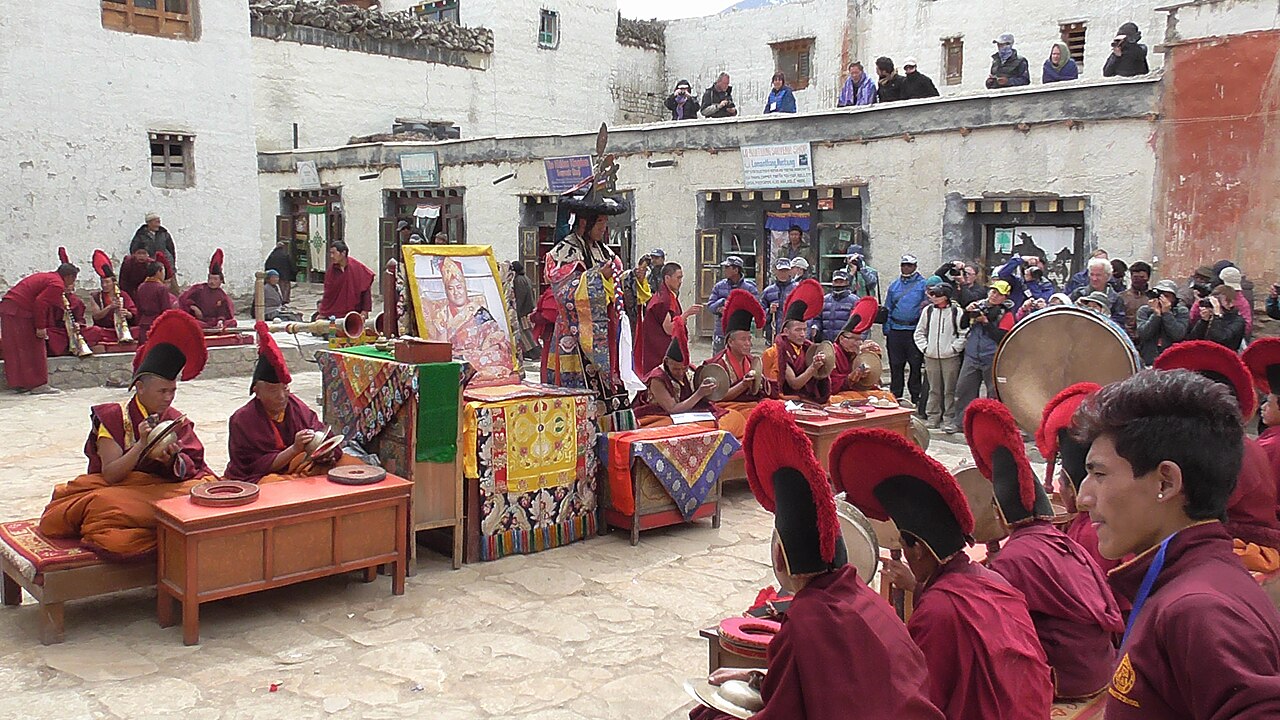 Ashokdhamala, CC BY-SA 4.0, Wikimedia Commons
Ashokdhamala, CC BY-SA 4.0, Wikimedia Commons
Keeping Out The Demons
Most Mustangese homes are decorated with a blessed sheep skull, a talisman thought to repel demons. There are 416 demons in the Mustang system of belief, responsible for over 1,000 diseases.
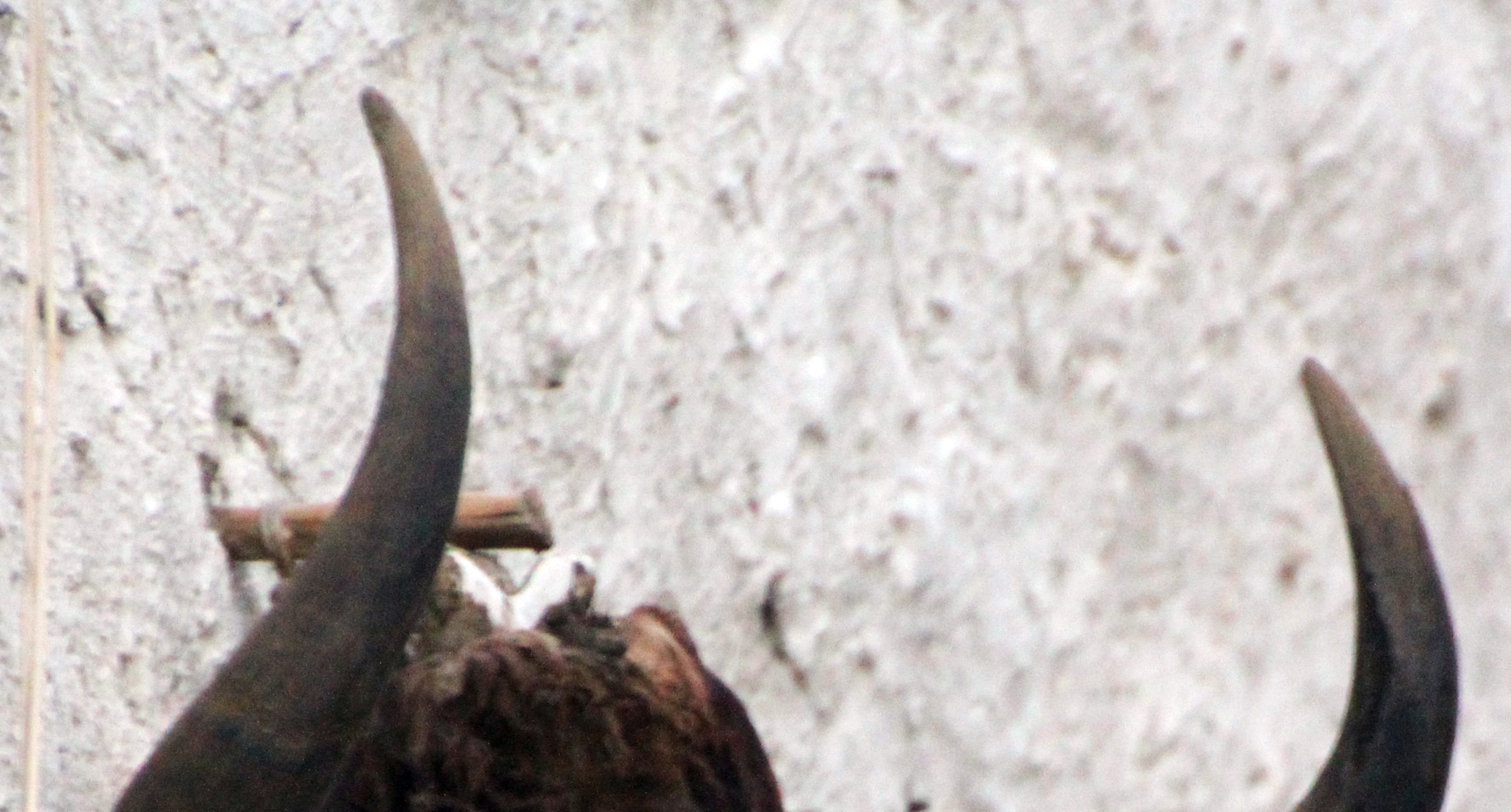 Gerd Eichmann, CC BY-SA 4.0, Wikimedia Commons
Gerd Eichmann, CC BY-SA 4.0, Wikimedia Commons
Buddhist Rituals
Mustangese Buddhism involves some unique customs. When passing a temple, whether human or animal, one should only pass on the right. There’s also the ritual of Lunga Tangen, which involves climbing a hill and lighting a fire of juniper branches, then releasing prayers on small pieces of paper into the wind.
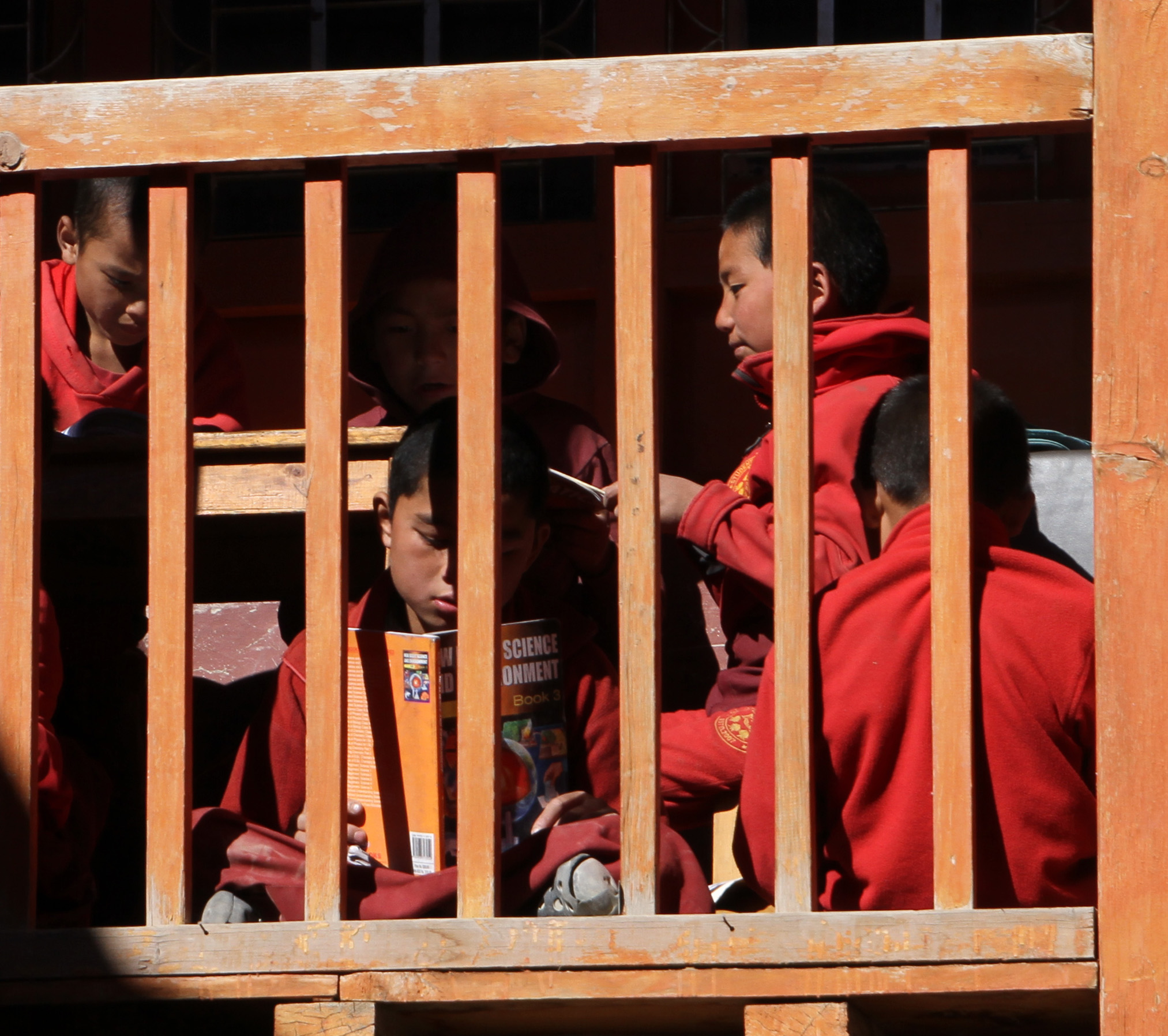 Gerd Eichmann, CC BY-SA 4.0, Wikimedia Commons
Gerd Eichmann, CC BY-SA 4.0, Wikimedia Commons
Funerary Rituals
Tibetan death customs include burial, cremation, water burial, and being fed to vultures. The Mustangese add a fifth option for people who perish without any male heirs: The body is enclosed in the walls of the house until a male heir is born!
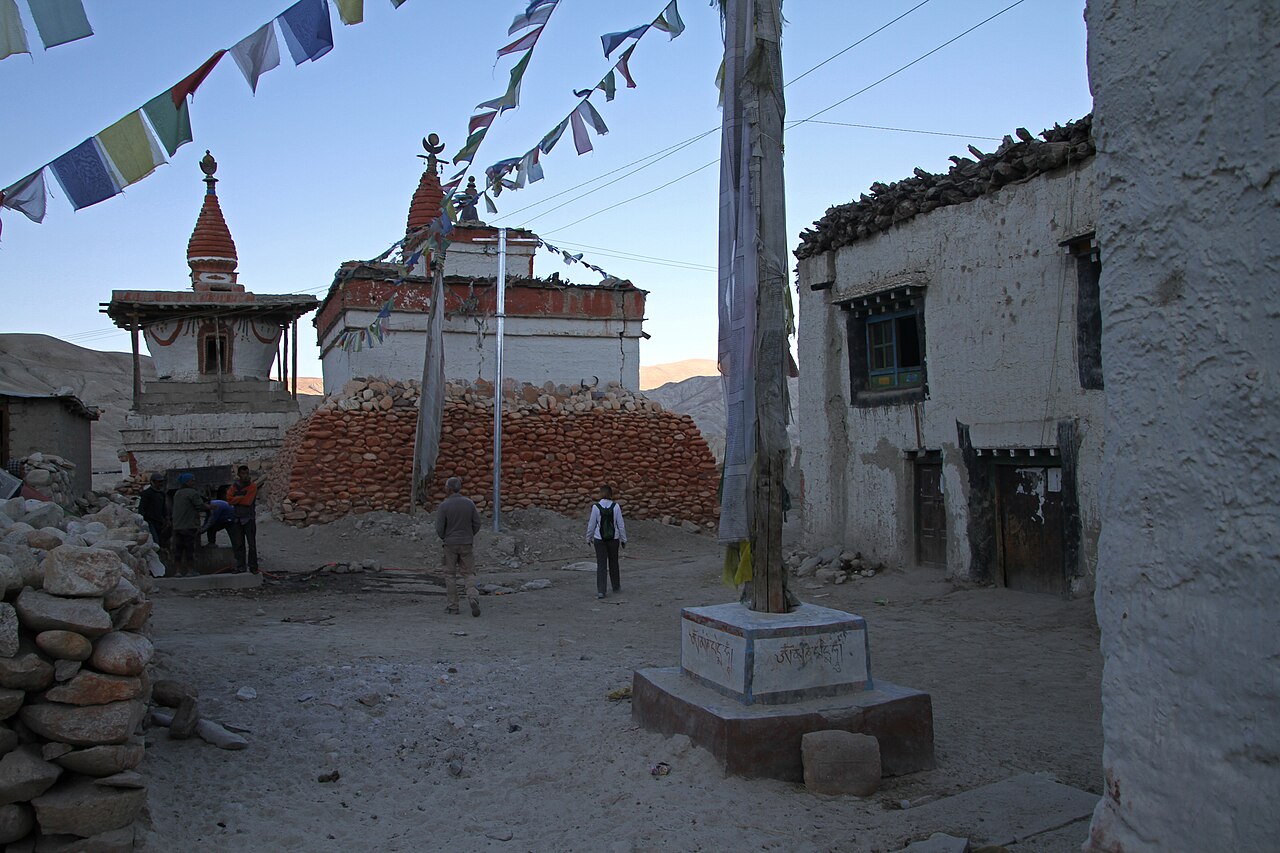 Gerd Eichmann, CC BY-SA 4.0, Wikimedia Commons
Gerd Eichmann, CC BY-SA 4.0, Wikimedia Commons
Buddhist Art
Many Tibetan monasteries paint over old paintings when the art shows signs of wear. The decline of the Kingdom of Lo meant that this was not possible in Mustangese monasteries, making them amazing places to see original Buddhist art.
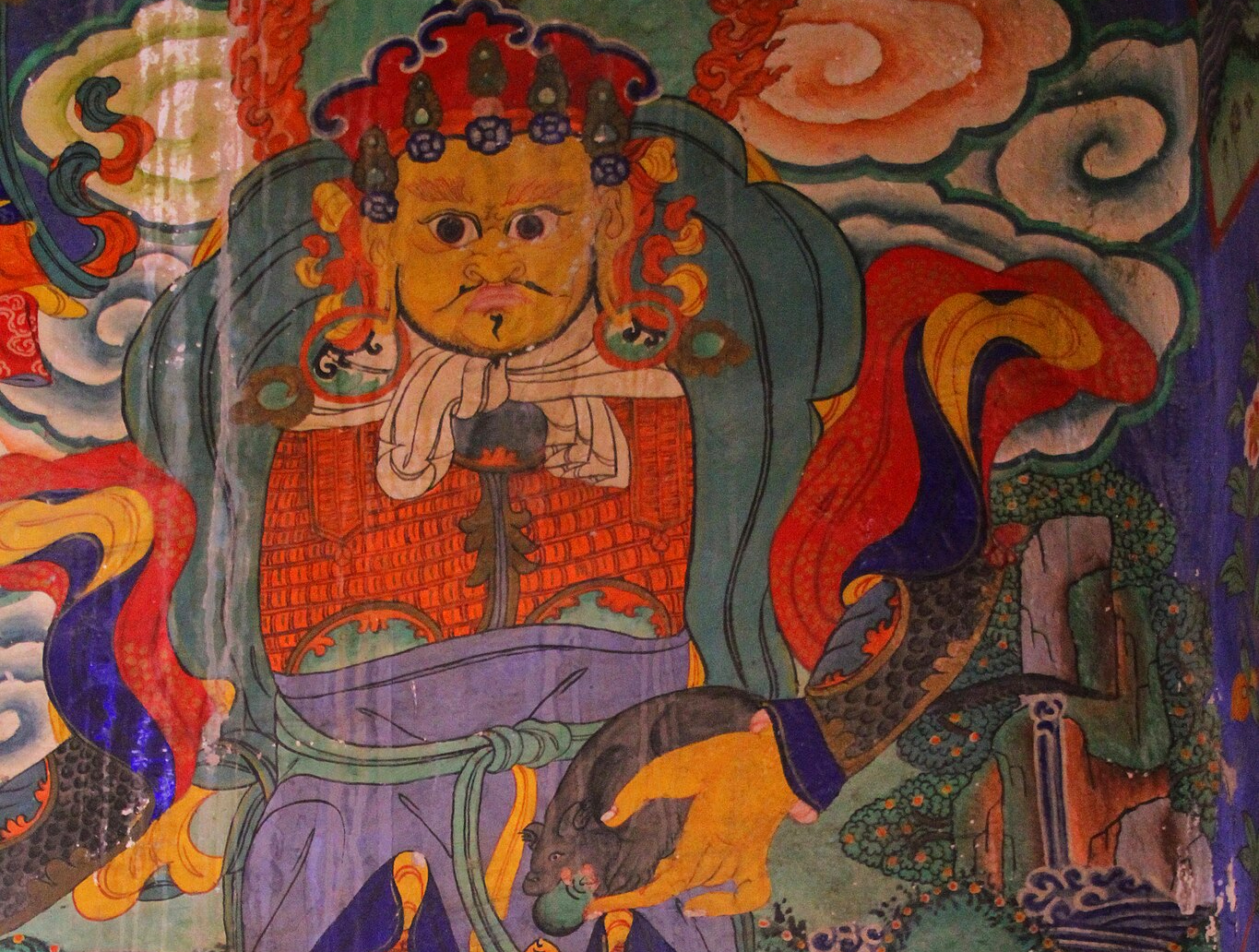 Gerd Eichmann, CC BY-SA 4.0, Wikimedia Commons
Gerd Eichmann, CC BY-SA 4.0, Wikimedia Commons
Agriculture
The primary crop of the Loba is barley. They raise goats and sheep for butter and milk. Common foods of the Loba include rice, dumplings called “momos”, a barley-based porridge called “tsampa”, and yak milk and cheese. Their soup-like tea includes ample helpings of yak butter and salt.
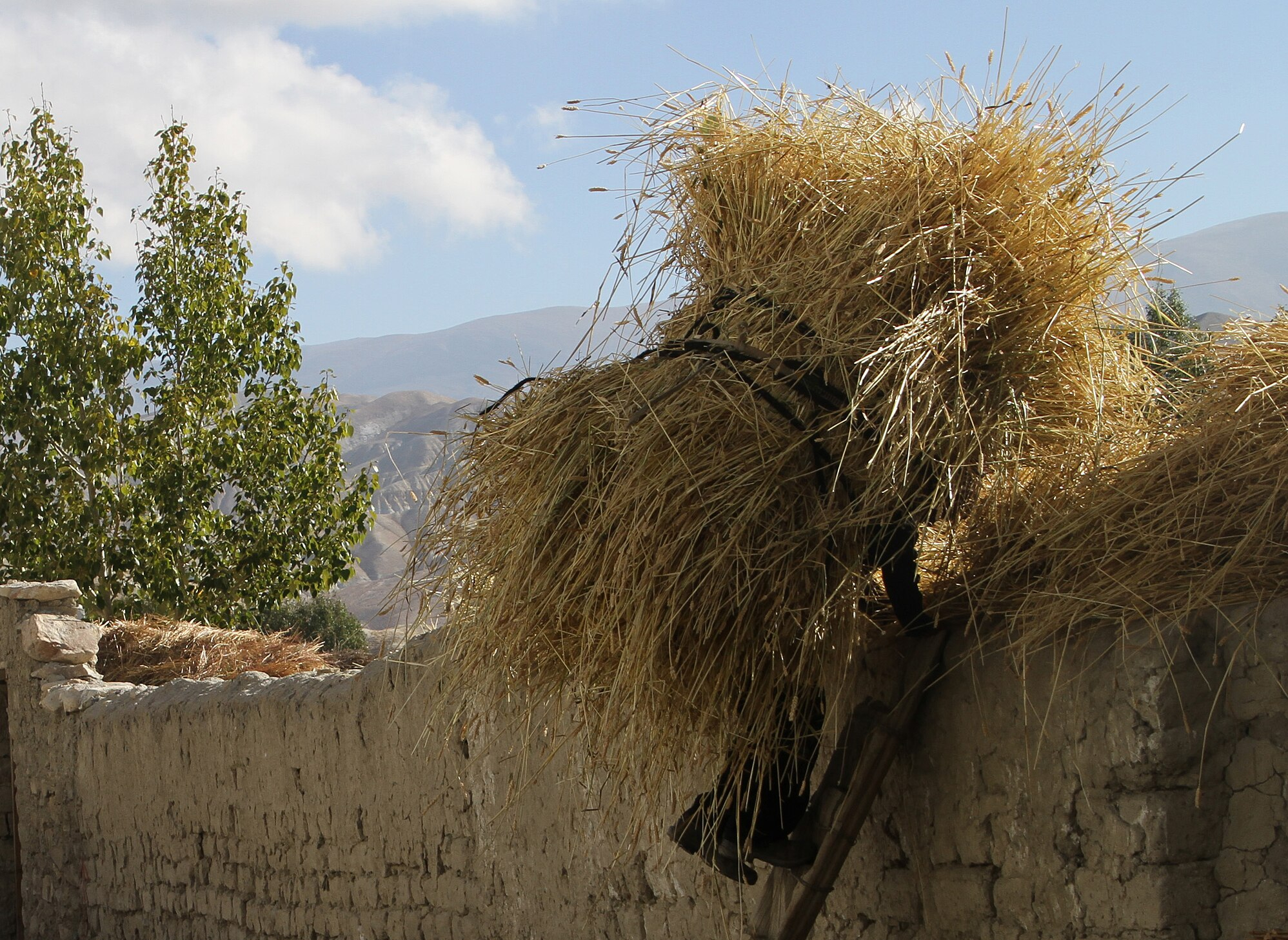 Gerd Eichmann, CC BY-SA 4.0, Wikimedia Commons
Gerd Eichmann, CC BY-SA 4.0, Wikimedia Commons
The Main Professions Of The Loba
The isolated nature of the Mustang region means there are only a few common professions for the Loba people. The main jobs of the Loba are farming, herding, and trading. Farmers and herders trade with each other, while traders will travel to other communities and bring back wares to their villages.
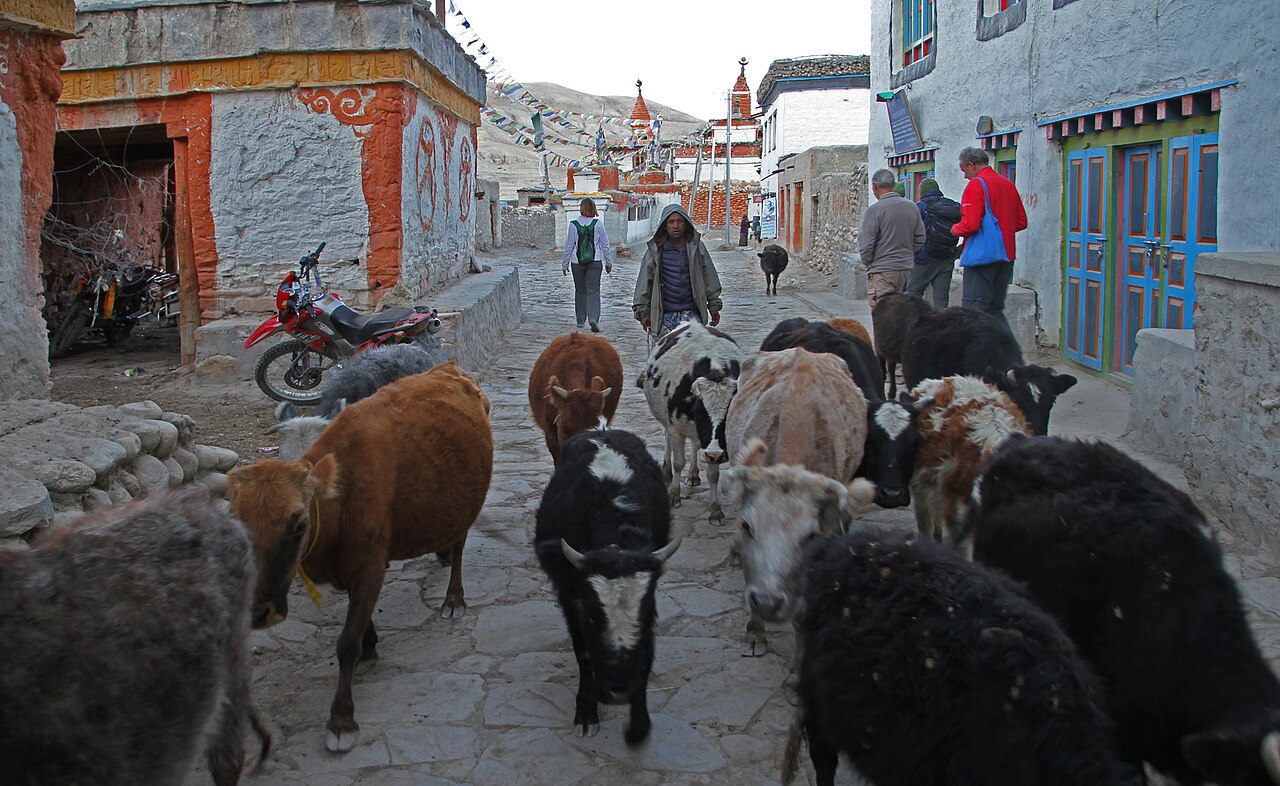 Gerd Eichmann, CC BY-SA 4.0, Wikimedia Commons
Gerd Eichmann, CC BY-SA 4.0, Wikimedia Commons
Mustangese Families
The Loba people practice a family structure called polyandry. Women in Loba villages can have up to two or three different husbands. Wives and husbands also have their food prepared in different ways, even though they eat mainly the same dishes.
A Rare Feudal Society
Although modern society has influenced the Loba, they still practice a form of feudalism. There has been a King of Mustang, also known as a “raja” or “mir”, for over 700 years. The king is considered to be partly divine and owns serfs who work the land for him.
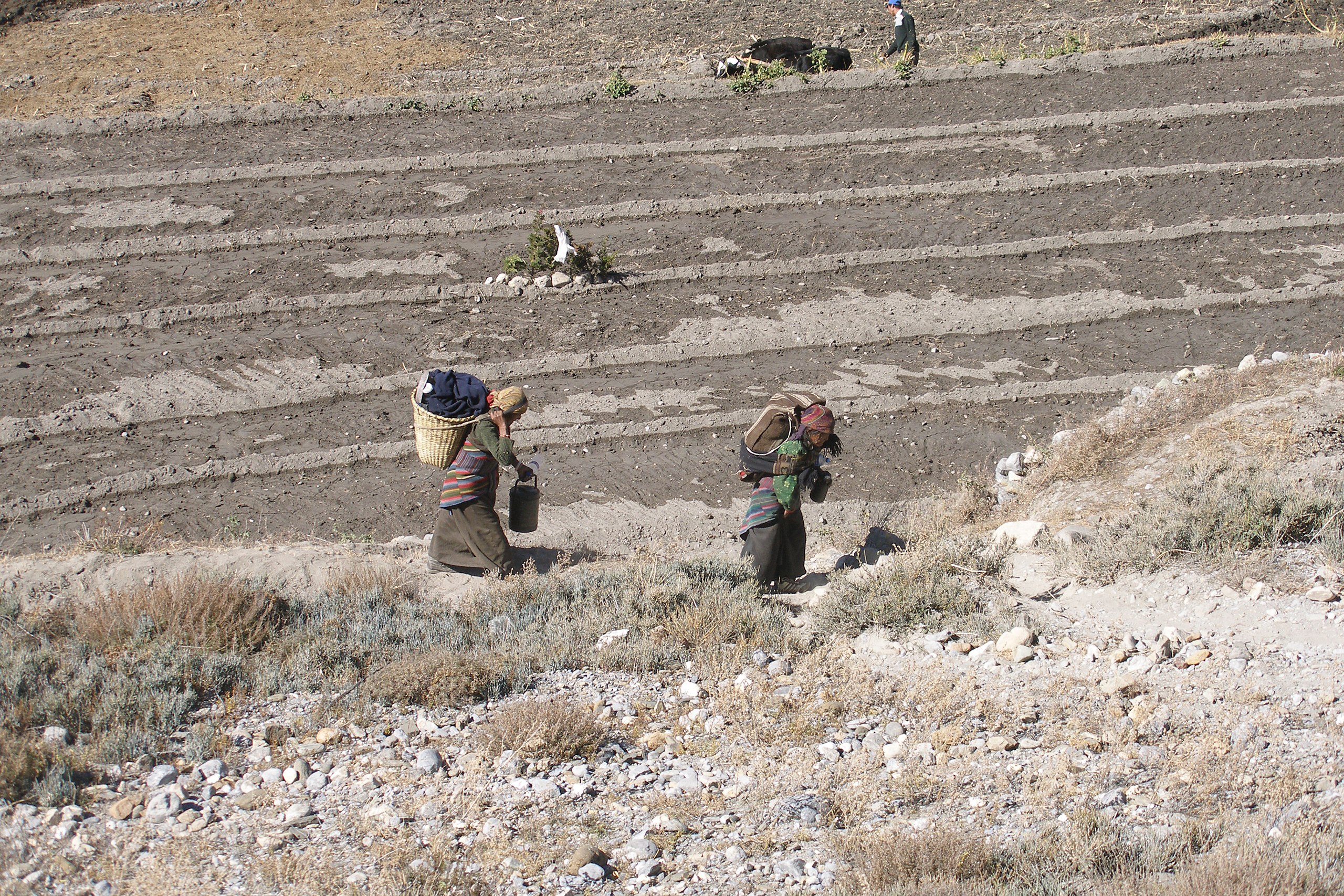 Vyacheslav Argenberg, CC BY 4.0, Wikimedia Commons
Vyacheslav Argenberg, CC BY 4.0, Wikimedia Commons
King Jigme Palbar Bista
One of the most recent kings, Jigme Palbar Bista, was the 25th king in the history of the Kingdom of Lo. He visited the United States in 1995 and saw the ocean for the first time. Showing the influence of modern society, he would often wear a windbreaker when greeting visitors to his palace.
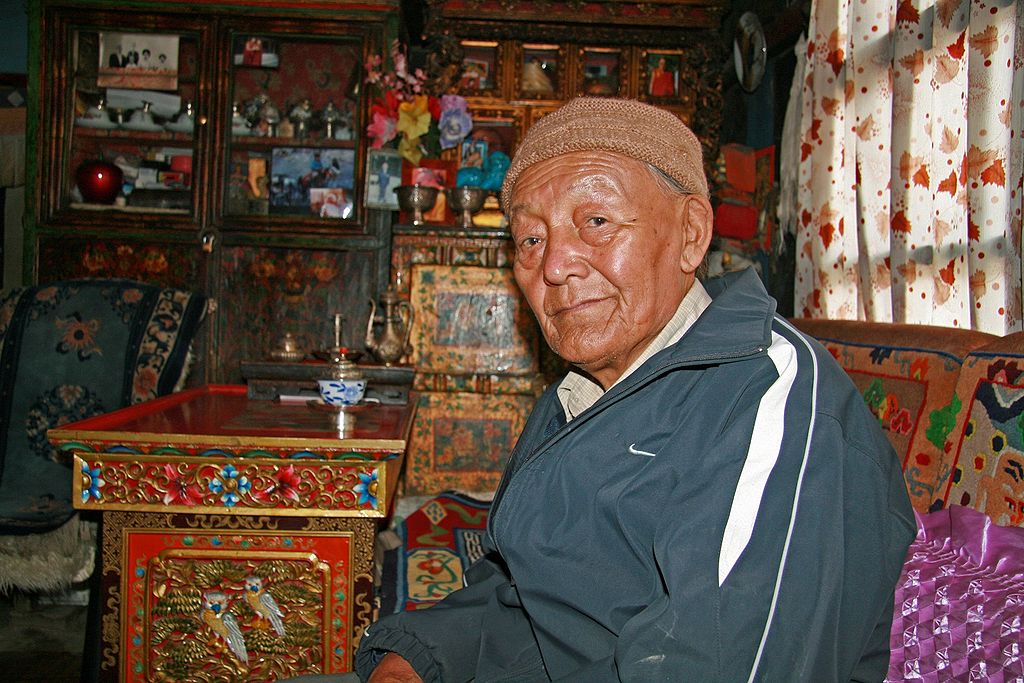 Boerniefischer, CC BY-SA 3.0 , via Wikimedia Commons
Boerniefischer, CC BY-SA 3.0 , via Wikimedia Commons
Traditions Of The King
There are certain things one must always do when greeting the King of Mustang. He is to be given a scarf,known as an “akata”. It is considered a great sin to greet the King without one. When dining with the King, visitors are seated lower down than the King to show deference to his position.
Social Hierarchy
Beneath the King, there are other levels of hierarchy in Loba culture. Similar to the King, those of higher stature in society sit on platforms raised above their inferiors at the cooking fire. Some professions, like blacksmiths or butchers, are considered so low that they can’t even enter the homes of other Loba.
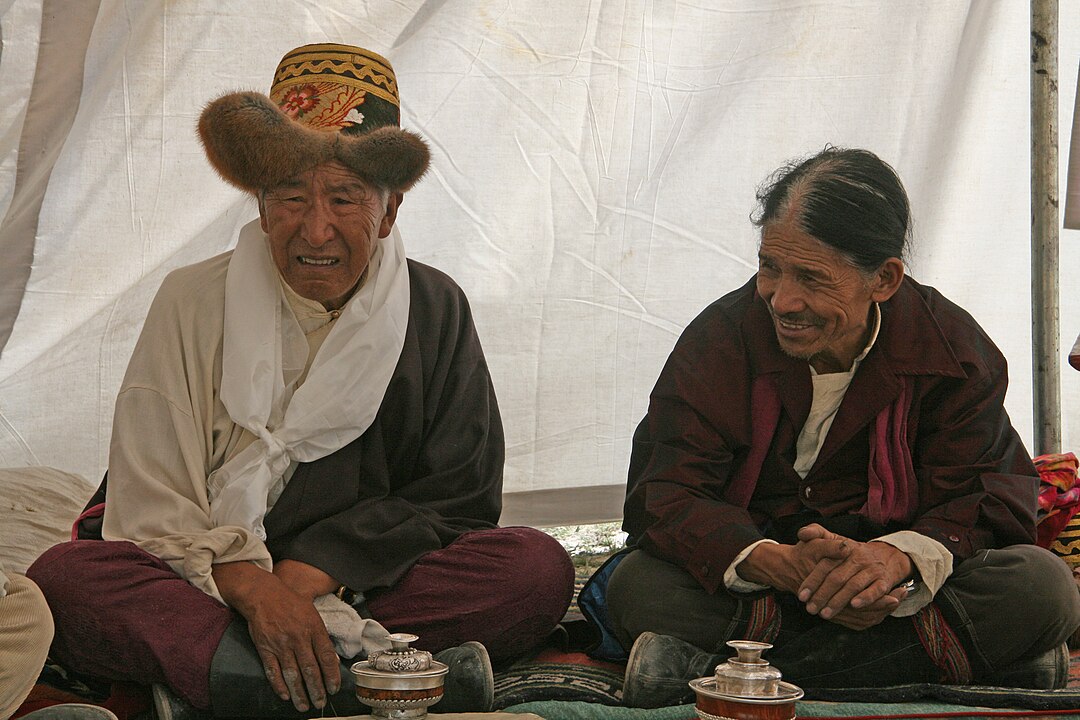 Boerniefischer, CC BY 3.0, Wikimedia Commons
Boerniefischer, CC BY 3.0, Wikimedia Commons
Festivals And Celebrations
The Loba have many unique and colorful celebrations throughout the year. One of the most important is a spring festival called “Tiji”. This festival celebrates the beginning of the planting season and involves costumed dancing and exorcisms.
The Exorcists
The exorcism ritual banishes demons and ensures a good growing season. Monks dressed in colorful costumes fire arrows, stones, and bullets at other Loba wearing demon masks. Precise gestures and movements in these rituals are required to properly expel the demons.
The Encroaching Modern World
Despite being quite isolated, tourism has opened up the Mustang region to the influence of the outside world. Posters of popular bands are often seen hanging next to pictures of the Dalai Lama. Many of the younger Loba are eager to leave behind the traditions of the past and embrace the modern world.
Disappearing Traditions
Even though he is still considered the ruler, many modern Loba don’t always listen to the commands of the King. He is still consulted in matters of state, but, as the King of the Loba told National Geographic, his people are very poor and looking to the modern world for new ways of improving their lives.

